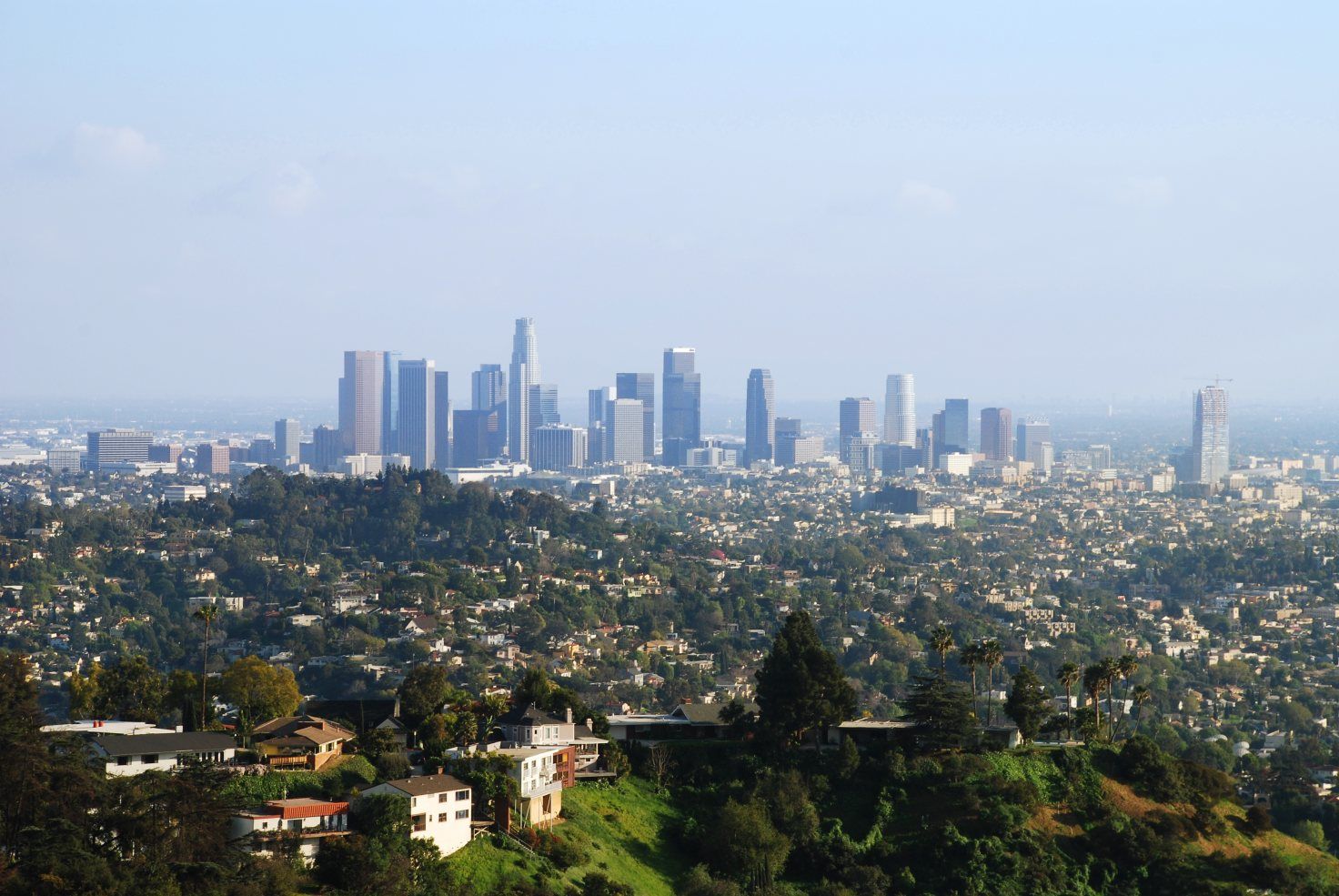
漢德百科全書 | 汉德百科全书
 FIFA Fussball-Weltmeisterschaft 2026
FIFA Fussball-Weltmeisterschaft 2026
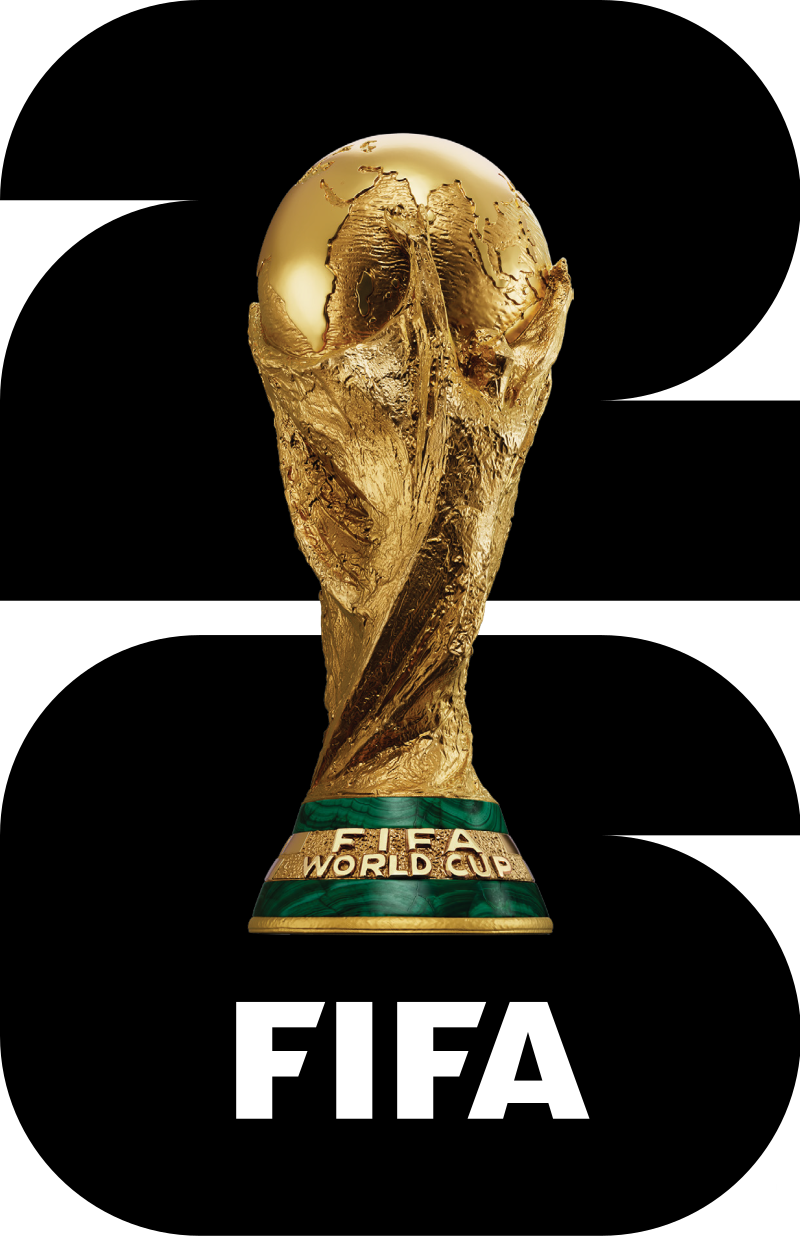


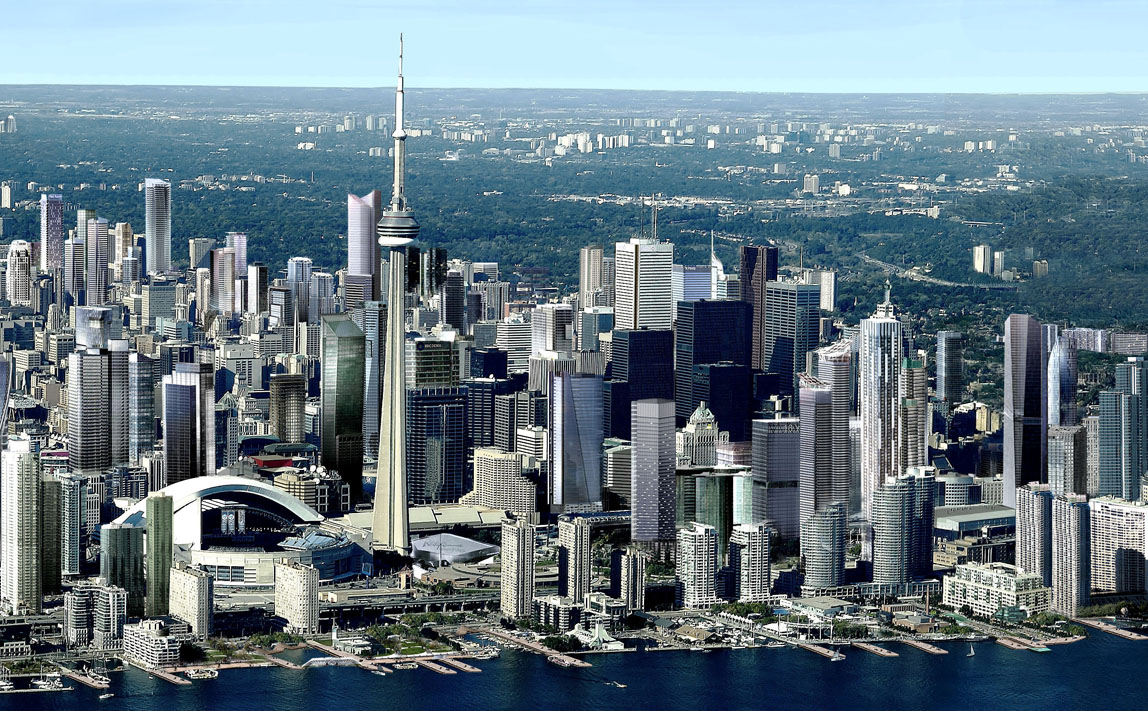
Toronto (englische Aussprache [təˈɹɒn(t)oʊ̯]; regional auch  [təˈɹɒnə] oder [ˈtɹɒnoʊ̯]) ist mit 2,6 Millionen Einwohnern[2] die größte Stadt Kanadas und die Hauptstadt der Provinz Ontario. Sie liegt im Golden Horseshoe (Goldenes Hufeisen), einer Region mit über 8,1 Millionen Einwohnern, die sich halbkreisförmig um das westliche Ende des Ontariosees bis zu den Niagarafällen erstreckt. Rund ein Drittel der Bevölkerungszunahme des ganzen Landes lebte in den letzten Jahren in diesem Großraum. Die Einwohnerzahl der Metropolregion (Census Metropolitan Area) stieg von 4,1 Millionen im Jahr 1992 auf 5,6 Millionen im Jahr 2011.[3] Die Greater Toronto Area hatte 2010 über 6,2 Millionen Einwohner.[4]
[təˈɹɒnə] oder [ˈtɹɒnoʊ̯]) ist mit 2,6 Millionen Einwohnern[2] die größte Stadt Kanadas und die Hauptstadt der Provinz Ontario. Sie liegt im Golden Horseshoe (Goldenes Hufeisen), einer Region mit über 8,1 Millionen Einwohnern, die sich halbkreisförmig um das westliche Ende des Ontariosees bis zu den Niagarafällen erstreckt. Rund ein Drittel der Bevölkerungszunahme des ganzen Landes lebte in den letzten Jahren in diesem Großraum. Die Einwohnerzahl der Metropolregion (Census Metropolitan Area) stieg von 4,1 Millionen im Jahr 1992 auf 5,6 Millionen im Jahr 2011.[3] Die Greater Toronto Area hatte 2010 über 6,2 Millionen Einwohner.[4]
Die Stadt liegt am nordwestlichen Ufer des Ontariosees, dem mit 18.960 km² Fläche[5] kleinsten der fünf Großen Seen. Durch die Eingemeindung einer Reihe von Vorstädten, die bereits mit Toronto verschmolzen waren (Etobicoke, Scarborough, York, East York und North York), wurde Toronto Ende der 1990er Jahre mehrfach vergrößert. Das Zentrum mit dem Einkaufs- und Bankendistrikt befindet sich in der Nähe des Sees. Die Haupteinkaufsstraße ist die Yonge Street. Toronto ist seit ungefähr den 1970er Jahren, nachdem Montreal über Jahrzehnte hinweg diese Rolle zugefallen war, Kanadas Wirtschaftszentrum und weltweit einer der führenden Finanzplätze.
多伦多(英语/法语:Toronto),是北美洲国家加拿大安大略省首府,加拿大的最大城市。
多伦多坐落在安大略湖西北岸的南安大略地区。根据2012年七月的加拿大人口普查,多伦市人口达2,790,060,为加拿大最大城市。多伦多市是大多伦多地区的心脏地区,也是安大略省南部人口稠密区(称作“金马蹄地区”)的一部分。[1][2][3]城市区有5,132,794名居民。[4]在2011年人口普查中,多伦多人口普查区有5,583,064名居民,而覆盖范围较广的大多伦多地区则有6,054,191名居民。[2]
作为加拿大的经济中心,多伦多是一个世界级城市,[5]也是世界上最大的金融中心之一。[6][7] 多伦多在经济上的领先地位在于金融、商业服务、电信、航太、交通运输、媒体、艺术、电影、电视制作、出版、软件、医药研究、教育、旅游、体育等产业。[8][9]多伦多证券交易所是世界第七大交易所,总部设于市内,有多数加拿大公司在这里上市。
多伦多的国际性人口[10] 体现出它是前往加拿大移民的重要落脚点。[11]而市内49%的人口是在加拿大以外诞生[12],也造就多伦多成为世上种族最多样化的城市之一。目前多伦多的低犯罪率、洁净的环境、高生活水准、以及对多样文化的包容性,令该市被多个经济学智囊团列为世界上最宜居的城市之一。[13][14]另一方面,多伦多于2006年被列为加拿大生活成本最高的城市。[15]
大约1/3的加拿大人居住在距多伦多两小时车程的郊区。加拿大大约1/6的就业机会在该市。
多伦多当地的华侨及华裔人口多达四十万,相当于加拿大全国约百分之一的人口,该城市也是加拿大华人最多的城市。除此之外也有大量世界各地的移民,加拿大安大略省多伦多市的人口统计资料使多伦多成为世界上最多元文化和多种族的城市之一。2016年,该市居民的51.5%属于明显的少数族裔,而2011年这一比例为49.1%,和1981年为13.6%。多伦多还建立了多个社区,例如唐人街,意大利的Corso,小意大利,小印度,希腊城,韩国城,小牙买加,小葡萄牙和朗塞瓦勒,以庆祝该市的多元文化主义的成功。
多伦多[注 1](英语:Toronto)是加拿大安大略省首府,也是加拿大最大的城市,坐落在安大略湖西北岸的南安大略地区。根据2021年的加拿大人口普查,多伦多市人口达2,794,356人,为加拿大最大城市。多伦多市是大多伦多地区的核心地区,也是安大略省南部人口稠密区(称作“金马蹄地区”)的一部分。[9][10][11]都会区有6,202,225名居民,[12]而覆盖范围较广的大多伦多地区则有9,765,188名居民。[10]作为加拿大的经济中心,多伦多是一个世界级城市,[13]也是世界上最大的金融中心之一。[14][15]多伦多在经济上的领先地位在于金融、商业服务、电信、航太、交通运输、媒体、艺术、电影、电视制作、出版、软件、医药研究、教育、旅游、体育等产业。[16][17]多伦多证券交易所是世界第七大交易所,总部设于市内,有多数加拿大公司在这里上市。
多伦多的国际性人口[18]体现出它是前往加拿大移民的重要落脚点。[19]而市内49%的人口是在加拿大以外诞生[20],也造就多伦多成为世上种族最多样化的城市之一。目前多伦多的低犯罪率、洁净的环境、高生活水准、以及对多样文化的包容性,令该市被多个经济学智囊团列为世界上最宜居的城市之一。[21][22]另一方面,多伦多于2006年被列为加拿大生活成本最高的城市。
トロント(英語: Toronto、標準音:[təˈɹɒntoʊ]、現地音:[ˈtɹɒnoʊ, təˈɹɒnoʊ])は、カナダのオンタリオ州の州都であり、同国最大の都市である。オンタリオ湖岸の北西に位置し、2016年の統計で人口273万人[1]。
国際影響力の強い世界都市であり、2016年の都市圏人口は624万人[2]。またヒューロン語で「集まる場所」という意味がある。
オンタリオ湖西岸を囲むゴールデン・ホースシュー(Golden Horseshoe)と呼ばれる都市化された地域の人口はおよそ924万人とされ、カナダ随一の金融センターとしてその中心を成している。1834年までの旧名はヨーク(Town of York)。
Toronto is the provincial capital of Ontario and the most populous city in Canada, with an estimated population of 2,956,024 (2018) and an estimated population of 6,341,935 in the Toronto Region (2018.)[14] Located on the shores of the western end of Lake Ontario, Toronto is also the anchor of the Golden Horseshoe, an urban agglomeration of 9,245,438 (2016)[15] that accounts for a significant portion of Canada's economic activity and more than 20% of Canada's population. Toronto is an international centre of business, finance, arts, and culture. Its large population of immigrants from around the globe has also made Toronto one of the most multicultural and cosmopolitan cities in the world.[16][17][18]
People have travelled through and inhabited the Toronto area, located on a broad sloping plateau interspersed with rivers, deep ravines, and urban forest, for more than 10,000 years.[19] After the broadly disputed Toronto Purchase, when the Mississauga surrendered the area to the British Crown,[20] the British established the town of York in 1793 and later designated it as the capital of Upper Canada.[21] During the War of 1812, the town was the site of the Battle of York and suffered heavy damage by American troops.[22] York was renamed and incorporated in 1834 as the city of Toronto. It was designated as the capital of the province of Ontario in 1867 during Canadian Confederation.[23] The city proper has since expanded past its original borders through both annexation and amalgamation to its current area of 630.2 km2 (243.3 sq mi).
The diverse population of Toronto reflects its current and historical role as an important destination for immigrants to Canada.[24][25] More than 50 percent of residents belong to a visible minority population group,[26] and over 200 distinct ethnic origins are represented among its inhabitants.[27] While the majority of Torontonians speak English as their primary language, over 160 languages are spoken in the city.[28]
Toronto is a prominent centre for music,[29] theatre,[30] motion picture production,[31] and television production,[32] and is home to the headquarters of Canada's major national broadcast networks and media outlets.[33] Its varied cultural institutions,[34] which include numerous museums and galleries, festivals and public events, entertainment districts, national historic sites, and sports activities,[35] attract over 43 million tourists each year.[36][37] Toronto is known for its many skyscrapers and high-rise buildings,[38] in particular the tallest free-standing structure in the Western Hemisphere, the CN Tower.[39]
The city is home to the Toronto Stock Exchange, the headquarters of Canada's five largest banks,[40] and the headquarters of many large Canadian and multinational corporations.[41] Its economy is highly diversified with strengths in technology, design, financial services, life sciences, education, arts, fashion, aerospace, environmental innovation, food services, and tourism.[42][43][44]
Toronto (/tɔ.ʁɔ̃.to/1 ; en anglais : /təˈɹɒntoʊ̯/2 Écouter voire localement /təˈɹɒnə/ ou /ˈtɹɒnoʊ̯/ Écouter) est la plus peuplée des villes du Canada et la capitale de la province de l'Ontario. Elle se situe dans le Sud-Est du Canada, sur la rive nord-ouest du lac Ontario. Selon le recensement de 2016, Toronto compte plus de 2,7 millions d'habitants, faisant d'elle la quatrième ville la plus peuplée en Amérique du Nord. Son aire métropolitaine compte 5,9 millions d'habitants, et la mégalopole du Golden Horseshoe, dont elle est le cœur, plus de 8,7 millions d'habitants en 2011, soit le quart de la population canadienne. Ville mondiale, Toronto est le centre bancaire, financier, commercial et artistique du Canada anglophone, et l'une des villes les plus multiculturelles et cosmopolites au monde.
La région de Toronto, située sur un vaste plateau en pente jalonné de rivières, de ravins et de forêts, est habitée depuis plus de 10 000 ans. Après la brève installation d'un fort par les Français puis l’achat contesté de la région au peuple Mississauga par la Couronne britannique, les colons anglais fondent en 1793 la ville d'York, qui devient la capitale du Haut-Canada. Pendant la guerre de 1812, la ville est le théâtre de la bataille d'York et subit de lourds dégâts par les troupes américaines. York est renommée Toronto en 1834. Elle est désignée capitale de la province de l'Ontario en 1867 par la Confédération canadienne. La ville s'est depuis étendue au-delà de ses frontières d'origine, à la suite de plusieurs fusions, jusqu'à atteindre la superficie actuelle de 630,2 km2.
La population particulièrement cosmopolite de Toronto reflète son rôle historique de destination des immigrants au Canada. Plus de 50 % des résidents appartiennent à un groupe de minorités visibles et plus de 200 origines ethniques distinctes sont représentées parmi ses habitants. Bien que la majorité des Torontois parlent l'anglais principalement, plus de 160 langues sont parlées dans la ville.
Toronto est devenu un important centre de musique, théâtre, de production cinématographique et télévisuelle. Elle abrite le siège des principaux réseaux de diffusion et des médias nationaux du Canada. Ses institutions culturelles variées, qui comprennent de nombreux musées et galeries d'art, des festivals et événements publics, des quartiers de divertissement, des lieux historiques nationaux et des activités sportives, attirent plus de 25 millions de touristes chaque année. Toronto est connue pour ses nombreux gratte-ciel, en particulier la plus haute structure autoportante de l' hémisphère occidental, la tour CN.
La ville abrite la Bourse de Toronto, le siège des cinq plus grandes banques du Canada et de nombreuses autres grandes sociétés canadiennes et multinationales, de tous les secteurs économiques. Elle abrite aussi de nombreux établissements d'enseignement supérieur réputés, dont l'université de Toronto qui figure parmi les plus réputées au monde.
Toronto apparaît régulièrement dans les classements des meilleures villes en termes de qualité de vie, malgré un coût de la vie important. Ses habitants s'appellent les Torontois.
Toronto (IPA: [təˈɹɒntoʊ̯]; pronuncia locale: [ˈtrɒnoʊ] oppure [təˈɹɒnə], ascolta[?·info]) è una città dell'estremo Sud-Est del Canada, capoluogo della provincia dell'Ontario e centro più popoloso del Canada con i suoi 3 120 668 abitanti[1] (5 928 040 nell'area metropolitana[2]).
Motore economico del Canada, Toronto è, assieme a Montréal, la città del paese nordamericano più conosciuta nel mondo, seguita da Ottawa. Caratteristica della città è quella di essere una delle più multiculturali nel mondo, con circa il 36% degli abitanti di origine non canadese. Per dare un'idea di ciò basti pensare che il 911 (numero telefonico di emergenza) di Toronto è attrezzato per rispondere in oltre 150 lingue[3]. La seconda più grande comunità, superata da qualche anno da quella cinese, è costituita dagli italiani che hanno dato un enorme contributo allo sviluppo di questo paese. Si stima che le persone di origine italiana residenti a Toronto siano superiori a 500 000. Il primo quartiere dove si insediarono gli italiani fu quello di College, successivamente si spostarono a Saint Clair denominata col nome aggiuntivo di Corso Italia[4] dal 1988.
Toronto è suddivisa in 240 quartieri all'interno dei suoi confini, raggruppati in sei distretti (Old Toronto, East York, Etobicoke, Scarborough, North York e York (dove si trova anche il quartiere di Weston). Nella parte centrale di Toronto (Downtown Toronto) c'è una città sotterranea, chiamata PATH (in inglese: il sentiero o il percorso), costituita da una rete di collegamenti che mettono in collegamento i grattacieli della città. Il percorso è lungo più di 30 km. Secondo il Guinness dei primati, con i suoi 371600 m² di estensione, il PATH è più esteso centro commerciale sotterraneo del mondo.[5]
I residenti considerano questi 27 km di strade sotterranee come parte della città stessa, come se la città iniziasse non dal suolo, ma dal piano -3. Venne creata agli inizi degli anni sessanta perché in inverno, spazzata da venti nordici, Toronto è molto fredda in rapporto alla latitudine, mentre sotto ci si può muovere in abiti primaverili, sulle strade superiori, durante straordinarie irruzioni gelide ci possono essere temperature di −25/−30 °C al primo mattino o di sera. Di notte si può scendere un po' più in basso ed in tali casi le massime rimangono spesso a -20 sotto lo zero. Ovviamente il traffico automobilistico convenzionale è bandito nella città sotterranea, gli spostamenti sono previsti a piedi o con mezzi per disabili, ma il path ha numerosi punti di contatto con la viabilità esterna (parcheggi) o, molto più frequentemente, con una fitta rete di stazioni del trasporto pubblico di superficie o sotterraneo (subway).
Per muoversi nella parte sotterranea è molto importante fare riferimento a elementi di identificazione degli incroci (come elementi architettonici, facciate di banche, negozi tipici, ecc.), dato che non sempre il percorso sotterraneo (pedonale) corrisponde a quello (stradale) di superficie; o meglio, se non si è pratici, bisogna usare la mappa. La città sotterranea è completamente attrezzata come una città comune: ci sono banche, uffici postali, locali pubblici, ristoranti, uffici e supermercati. Le maggiori istituzioni (stazioni ferroviarie, aziende pubbliche, aziende commerciali, ecc.) hanno accesso multiplo: di superficie e sotterraneo.
Toronto (pronunciación en inglés: /tʲəˈɹɑntʲoʊ/ (![]() escuchar), localmente /tʲəˈɹɑnoʊ/, /ˈtʲɹɑnoʊ/) es la capital de la provincia de Ontario3 y, con una población de 2 615 060 habs.4 es la ciudad más grande de Canadá,5 además del centro financiero de dicho país.
escuchar), localmente /tʲəˈɹɑnoʊ/, /ˈtʲɹɑnoʊ/) es la capital de la provincia de Ontario3 y, con una población de 2 615 060 habs.4 es la ciudad más grande de Canadá,5 además del centro financiero de dicho país.
Localizada en la orilla noroeste del lago Ontario,6 es la quinta ciudad más grande de Norteamérica.7 Toronto se encuentra en el corazón del Área Metropolitana de Toronto (Greater Toronto Area en inglés y abreviado como GTA), la mayor área metropolitana de Canadá, y es parte de una región densamente poblada en el centro-sur de Ontario conocida como Golden Horseshoe (Herradura Dorada), donde residen ocho millones de habitantes.8910
Al ser la capital económica de Canadá, Toronto es considerada una ciudad global y una de las principales ciudades financieras del mundo.11 Lidera los sectores económicos de finanzas, servicios empresariales, telecomunicaciones, transporte, medios de comunicación, arte, cine, investigación médica, educación, y turismo de Canadá.1213 El Toronto Stock Exchange es la mayor bolsa de valores del país y la séptima del mundo.12
Toronto es famosa por la Torre CN, con 553 metros de altura. La ciudad se considera el centro de la cultura canadiense anglófona y es la anfitriona de muchas celebraciones nacionales.
La población de Toronto es cosmopolita,1415 y es un importante destino para muchos inmigrantes a Canadá.16 Toronto es la mayor ciudad del mundo en porcentaje de residentes no nacidos en el propio país; sobre un 49 % de los habitantes de la ciudad no ha nacido en Canadá.141516 Debido al bajo índice de criminalidad,17 el cuidado medio ambiente y el alto nivel de vida, Toronto, es considerada con asiduidad una de las ciudades mejor habitables del mundo.1819 Además, en 2006 fue clasificada como la ciudad más cara de Canadá.20 Los nacidos en Toronto reciben el gentilicio de torontonianos.21
En enero de 2005, Toronto fue escogida por el gobierno canadiense como una de las capitales culturales de Canadá. Toronto posee una de las mejores calidades de vida de América del Norte, y es considerada por muchos como una de las mejores metrópolis del mundo para vivir.22 Es una de las ciudades más seguras de América —su tasa de criminalidad es menor que la de cualquier gran ciudad del continente, y una de las menores de Canadá.23
En la ciudad vecina de Mississauga está el Aeropuerto Internacional Toronto Pearson. Además, en 'las islas de Toronto' dentro de la ciudad está el Billy Bishop Toronto City Airport, que es más pequeño.
Торо́нто (англ. Toronto [təˈrɒntoʊ], местн. [təˈrɒnoʊ], [ˈtrɒnoʊ], [-nə]) — крупнейший город Канады, административный центр провинции Онтарио. Население — 2 731 571 чел. (2016); вместе с городами Миссиссога, Брамптон, Маркем и другими образует агломерацию Большой Торонто с населением 5928 тыс. жителей.
Торонто является частью «золотой подковы» — густонаселённого региона вокруг западной части озера Онтарио с населением около 7 млн человек. Приблизительно одна треть всего населения Канады живёт в радиусе 500 км от Торонто. Около шестой части всех рабочих мест Канады находятся в пределах городской черты.
Город Торонто известен также как «экономический двигатель» Канады, считается одним из ведущих мегаполисов мира и имеет большой вес как в регионе, так и на государственном и международном уровне. В ежегодном рейтинге Global Liveability Ranking журнала The Economist, оценивающем совокупное качество жизни, Торонто занимает четвёртое место в мире среди 140 городов — участников рейтинга[1].
В Торонто располагается главный офис Всемирного конгресса украинцев. В июне 2010 года в Торонто прошла встреча глав государств и правительств «Большой двадцатки».
К северо-востоку от Торонто в городе Пикеринг находится атомная электростанция АЭС Пикеринг с восемью ядерными реакторами.

 FIFA Fussball-Weltmeisterschaft 2026
FIFA Fussball-Weltmeisterschaft 2026
 FIFA Club World Cup 2025
FIFA Club World Cup 2025
 Women's Soccer World Cup 2003
Women's Soccer World Cup 2003

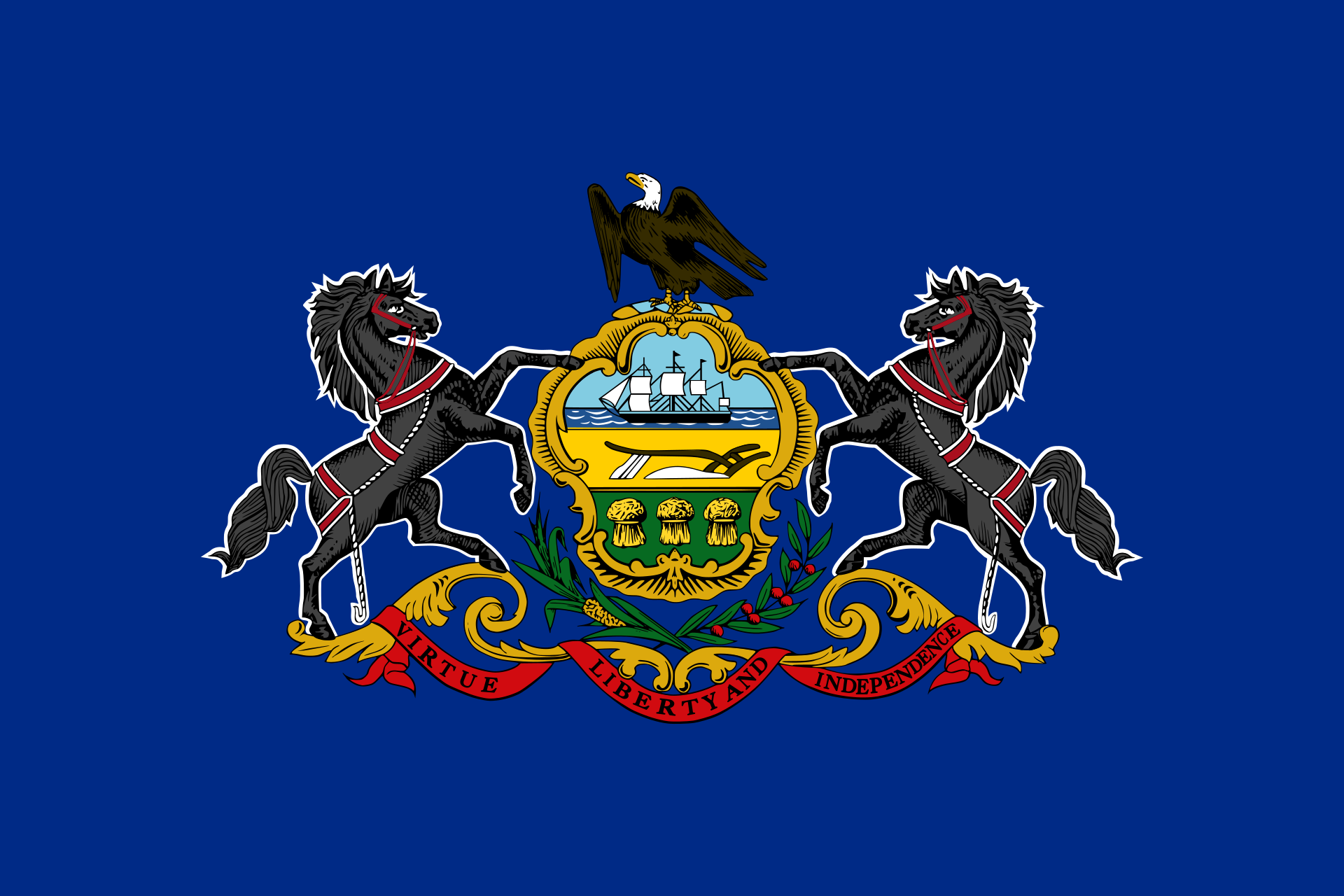 Pennsylvania-PA
Pennsylvania-PA
 United States
United States

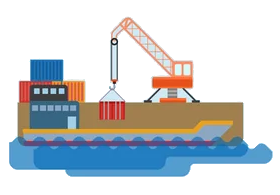 Important port
Important port
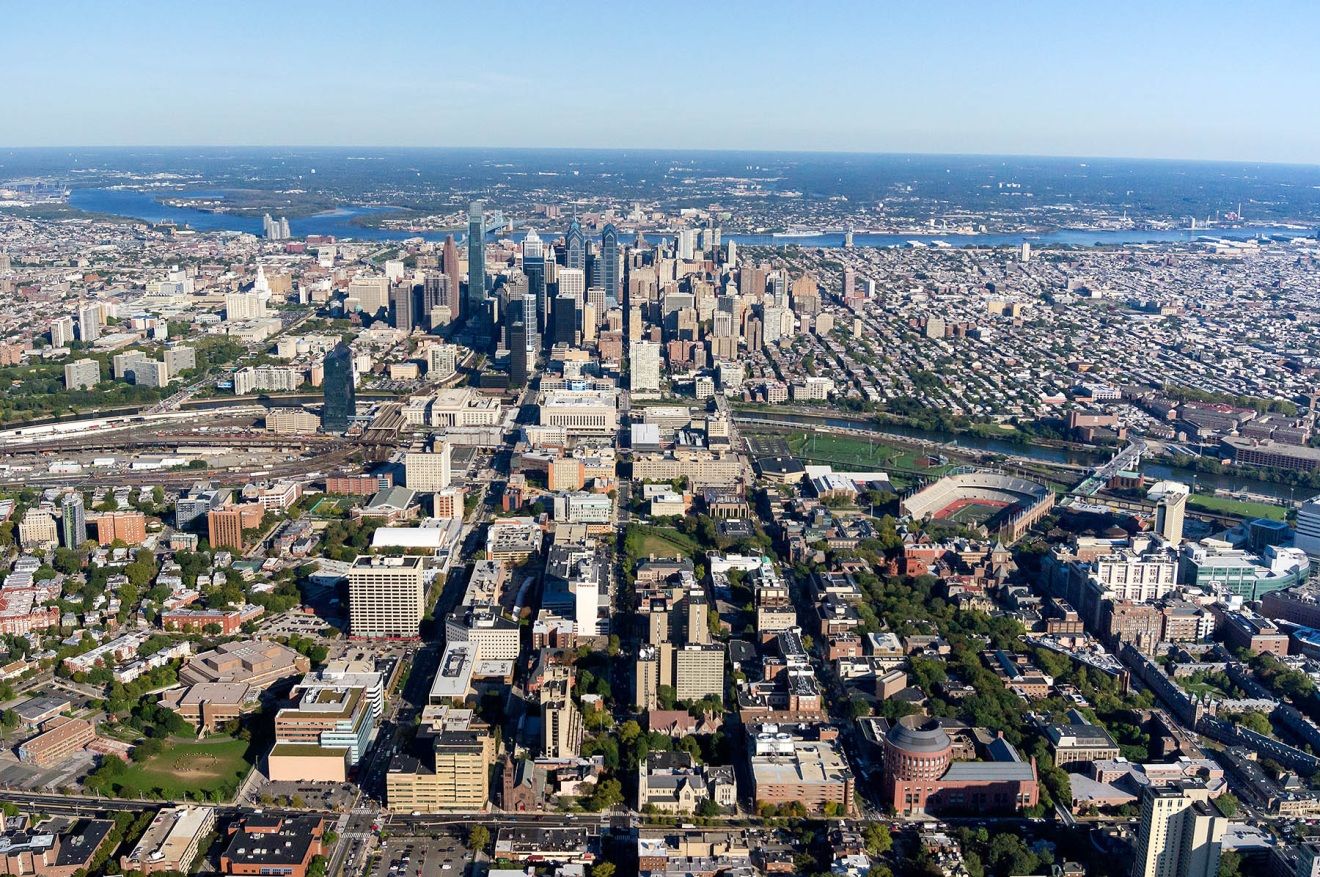
Philadelphia ist eine Stadt im US-Bundesstaat Pennsylvania. Mit rund 1,6 Millionen Einwohnern (Stand: 2016, Schätzung des U.S. Census Bureau) ist sie die sechstgrößte Stadt der Vereinigten Staaten[1] und die größte des Bundesstaates Pennsylvania. An der Ostküste ist Philadelphia nach New York City die zweitgrößte Stadt. Die Stadt liegt am Delaware River im Zentrum der Metropolregion Delaware Valley.
In der Geschichte der USA ist Philadelphia eine der bedeutendsten Städte. Nach New York und vor Washington war sie 1790 bis 1800 Nationalhauptstadt und damals die größte Stadt der USA sowie nach London die zweitgrößte englischsprachige Stadt der Welt. In Philadelphia tagte der erste und teilweise auch der zweite Kontinentalkongress sowie der Verfassungskonvent von 1787, die Amerikanische Unabhängigkeitserklärung wurde hier verkündet und die Verfassung beschlossen.
Philadelphia wird umgangssprachlich Philly oder City of Brotherly Love genannt, was von einer Übersetzung des griechischen Namens Philadelphia herrührt (φιλíα philía ‚Liebe‘ und ἀδελφός adelphós ‚Bruder‘ → φιλαδελφία philadelphía ‚Bruderliebe‘).
费城(英语:Philadelphia),即费利德菲亚,也常被简称为费利(或菲利,英语:Philly) ,中文又音译为非拉铁非和菲拉德尔斐亚,是美国宾夕法尼亚州人口最多、面积最大的都市,同时是美国第五大城。根据2010年人口普查数据,费城人口为1,526,006人。费城市中心的人口在全美国排名第五,仅次于纽约、洛杉矶、芝加哥和休斯顿。以现在美国官方的定义而言,费城都会区的面积大小排名全美第四,共约620万人居住其中,但若以其他定义来衡量,费城排名第六,次于旧金山湾区与华盛顿-巴尔的摩都会区。费城是德拉瓦河谷都会区的中心城市。
费利德菲亚即希腊文“友爱”的意思,是传教士命名的,费城是美国最老、最具历史意义的城市,它在美国史上有非常重要的地位。在18世纪时,费城是美国第二大城与人口最多的城市,在当时,它的政治与社会重要性超过纽约与波士顿。本杰明·富兰克林对费城的兴起贡献良多。从1854年起,费城市和费城县为两个并行的地方政府,而从1952年起,市与县共有一个政府组织,但费城县仍属宾州州政府下的一个独立的县。
自从1854年通过“合并法案”(Act of Consolidation)后,费城市的边界就与费城县相同。在此之前,费城市只在南街(South Street)、葡萄街(Vine Street)与德拉瓦河与斯库基尔河(Schuylkill River)之间的区域。费城后来扩张至周围的西费城(West Philadelphia)、北费城(North Philadelphia)与东北费城(Northeast Philadelphia),同时也包括了几个小型的聚落如罗布鲁(Roxborough)、马拉扬克(Manayunk)、艾利山(Mount Airy)与栗树丘(Chestnut)。费城同时是全美最大的大学城(college town)之一,拥有许多高等学府,其中包括常春藤盟校的宾夕法尼亚大学,国家第一所医学院和法学院兼缘于此校。有超过120,000名大学生就读市区的学院与大学,周遭的都会区也有接近300,000名的大学与学院学生。
フィラデルフィア(英語: Philadelphia)は、アメリカ合衆国ペンシルベニア州南東部にある都市。同州の最大都市かつ北米有数の世界都市である。市内の人口は156万7442人(2015年推計[1])で全米第5位。
名門のペンシルベニア大学や工学系に強いドレクセル大学、日本にもキャンパスを置く州立大学のテンプル大学を抱える学術都市である。市内に約12万人、都市圏全体で約30万人と、全米で最も多くの学生を持つ都市のひとつである。
漢字の当て字和名は費拉特費、また短縮して費府。
なお、フィラデルフィア都市圏の治安は概ね良好であるが、デラウェア川の対岸にあるニュージャージー州カムデンは、デトロイトやセントルイスなどと並んで、全米で最も危険な都市のひとつとされる。
独立記念館や自由の鐘があり、近郊にはバレーフォージがある合衆国建国ゆかりの地である。
Philadelphia, often called Philly, is the largest city in the U.S. state and Commonwealth of Pennsylvania, and the sixth-most populous U.S. city, with a 2017 census-estimated population of 1,580,863.[6] Since 1854, the city has been coterminous with Philadelphia County, the most populous county in Pennsylvania and the urban core of the eighth-largest U.S. metropolitan statistical area, with over 6 million residents as of 2017.[4] Philadelphia is also the economic and cultural anchor of the greater Delaware Valley, located along the lower Delaware and Schuylkill Rivers, within the Northeast megalopolis. The Delaware Valley's population of 7.2 million ranks it as the eighth-largest combined statistical area in the United States.[5]
William Penn, an English Quaker, founded the city in 1682 to serve as capital of the Pennsylvania Colony.[8] Philadelphia played an instrumental role in the American Revolution as a meeting place for the Founding Fathers of the United States, who signed the Declaration of Independence in 1776 at the Second Continental Congress, and the Constitution at the Philadelphia Convention of 1787. Several other key events occurred in Philadelphia during the Revolutionary War including the First Continental Congress, the preservation of the Liberty Bell, the Battle of Germantown, and the Siege of Fort Mifflin. Philadelphia was one of the nation's capitals during the revolution, and served as temporary U.S. capital while Washington, D.C., was under construction. In the 19th century, Philadelphia became a major industrial center and a railroad hub. The city grew from an influx of European immigrants, most of whom came from Ireland, Italy and Germany—the three largest reported ancestry groups in the city as of 2015.[9] In the early 20th century, Philadelphia became a prime destination for African Americans during the Great Migration after the Civil War,[10] as well as Puerto Ricans.[11] The city's population doubled from one million to two million people between 1890 and 1950.
The Philadelphia area's many universities and colleges make it a top study destination, as the city has evolved into an educational and economic hub.[12][13] According to the Bureau of Economic Analysis, the Philadelphia area had a gross domestic product of US$431 billion in 2016, the eighth-largest metropolitan economy in the United States.[14] Philadelphia is the center of economic activity in Pennsylvania and is home to five Fortune 1000 companies. The Philadelphia skyline is expanding, with a market of almost 81,900 commercial properties in 2016,[15] including several nationally prominent skyscrapers.[16] Philadelphia has more outdoor sculptures and murals than any other American city.[17][18] Fairmount Park, when combined with the adjacent Wissahickon Valley Park in the same watershed, is one of the largest contiguous urban park areas in the United States.[19] The city is known for its arts, culture, cuisine, and colonial history, attracting 42 million domestic tourists in 2016 who spent US$6.8 billion, generating an estimated $11 billion in total economic impact in the city and surrounding four counties of Pennsylvania.[20] Philadelphia has also emerged as a biotechnology hub.[21]
Philadelphia is the birthplace of the United States Marine Corps,[22][23] and is also the home of many U.S. firsts, including the first library (1731),[24] hospital (1751),[24] medical school (1765),[25] national capital (1774),[26] stock exchange (1790),[24] zoo (1874),[27] and business school (1881).[28] Philadelphia contains 67 National Historic Landmarks and the World Heritage Site of Independence Hall.[29] The city became a member of the Organization of World Heritage Cities in 2015,[30] as the first World Heritage City in the United States.[13] Although Philadelphia is rapidly undergoing gentrification, the city actively maintains mitigation strategies to minimize displacement of homeowners in gentrifying neighborhoods.[31]
Philadelphie (en anglais Philadelphia, prononcé [ˌfɪləˈdɛlfiə]), surnommée Philly, est une ville du Commonwealth de Pennsylvanie, située dans le Nord-Est des États-Unis, entre New York et Washington DC. Le nom de la ville, choisi par William Penn, signifie « amitié fraternelle2 » en grec, car elle devait être un îlot de tolérance religieuse.
Cinquième ville du pays selon le recensement fédéral de 2010 (après New York, Los Angeles, Chicago et Houston) et sixième agglomération3, Philadelphie compte 1 526 006 habitants dans la municipalité (Philadelphia City) et 5 965 343 habitants dans son aire métropolitaine (PMSA de Philadelphie–Camden–Wilmington)4.
Centre historique, culturel et artistique majeur aux États-Unis, Philadelphie est également un grand port industriel sur le fleuve Delaware qui se jette dans l’océan Atlantique. Fondée en 1682, elle fut jusqu'à 1790 la ville la plus peuplée d'Amérique du Nord. Entre 1774 et 1800, le Congrès des États-Unis s'est réuni en plusieurs endroits, le plus souvent à Philadelphie, faisant de celle-ci la capitale temporaire du pays, jusqu'à ce que Washington devienne la capitale définitive. Par ailleurs, Philadelphie entretient pendant quelques décennies une rivalité financière et politique avec New York, avant d'être éclipsée par sa rivale.
À présent, Philadelphie est la principale métropole de l'État de Pennsylvanie, dont la capitale est Harrisburg, et le siège du comté de Philadelphie.
Filadelfia[1][2] (in inglese: Philadelphia, informalmente anche Philly[3]) è la sesta città per popolazione degli Stati Uniti d'America e la più importante dello stato della Pennsylvania. Nel 2014 contava 1 560 297 abitanti; mentre la sua area metropolitana, estesa anche su parti dei vicini stati del Delaware e del New Jersey, raggiungeva i 5,8 milioni di abitanti.
Fondata nel 1682 dal quacchero William Penn, Filadelfia è una delle più antiche città degli Stati Uniti d'America, e fra la fine del XVIII secolo e l'inizio del XIX fu la città più grande del Paese. In quell'epoca vi furono redatte la dichiarazione di Indipendenza (1776) e la costituzione statunitense.
Filadelfia sorge sulla riva occidentale del fiume Delaware, ed è attraversata da un suo affluente, lo Schuylkill; il centro storico della città è compreso fra questi due fiumi.
Filadelfia3 (en inglés, Philadelphia, también apodada coloquialmente Philly) es la mayor ciudad del estado de Pensilvania, Estados Unidos. Está ubicada sobre la orilla derecha del río Delaware —poco antes de su desembocadura en la bahía de Delaware—, que la separa del estado de Nueva Jersey, y en un punto intermedio entre las importantes ciudades de Nueva York y Washington D. C. Es la quinta ciudad del país por población y la 51.ª del mundo. El condado de Filadelfia, del que es sede, tiene 1 526 000 habs. (Philadelphia City) y su área metropolitana (Valle de Delaware) alcanza los 6 millones de habs. (censo de 2014).
Es un gran centro histórico, cultural y artístico en los Estados Unidos, y de la misma forma un importante puerto industrial sobre el río Delaware, que se extiende hasta el océano Atlántico. Fundada en 1682, fue durante el siglo XVIII la ciudad más poblada de las Trece Colonias y la tercera ciudad más poblada del Imperio británico (tras Londres y Dublín), antes de convertirse provisionalmente en la ciudad capital de los Estados Unidos. Fue velozmente superada por Nueva York y le cedió su estatus de capital a la flamante ciudad de Washington D.C. Hoy, Filadelfia es la principal metrópolis del estado de Pensilvania, aunque la capital y sede del gobierno es Harrisburg.
El nombre de la ciudad, elegido por William Penn, significa "la ciudad del amor fraternal" (compuesta de philos (φίλος) "amor", y adelphos (ἀδελφός) "hermano"), pues se deseaba que fuese un refugio de tolerancia religiosa.
Establecida en 1682, es una de las ciudades más antiguas del país, y, como capital original y ciudad más grande de la época colonial, gozaba de una importancia política y social mayor que Boston o Nueva York. En 1776, el Congreso Continental de las Trece Colonias se reunió en Filadelfia y en el 4 de julio de ese año, declaró la independencia de Gran Bretaña. Quizás el ciudadano más famoso de Filadelfia fue Benjamin Franklin, escritor, científico y político.
Filadelfia es fundamental para la historia afroamericana, su gran población negra es anterior a la Gran Migración.
Филаде́льфия (англ. Philadelphia [ˌfɪləˈdɛlfiə], общеупотр. сокр. «Фи́л(л)и», англ. Philly [ˈfɪli])[1][2] — один из старейших городов США, пятый по величине населения город страны и самый населённый город штата Пенсильвания, с населением 1 526 006 жителей (согласно переписи 2010 года). Население агломерации вместе с пригородами составляет 6 034 678 жителей. Расположен на реке Делавэр у побережья Атлантического океана[3].
Филадельфия богата историей и культурой. В исторической части города до сих пор царит атмосфера маленького и тихого городка, каким была и Филадельфия, и другие колониальные города во время образования государства Соединённые Штаты Америки.
Основан в 1682 году Уильямом Пенном. Имеет прозвище «Город братской любви» (Φιλαδέλφεια на греческом языке означает 'братолюбие'), это связано с тем, что город основан переселенцами, принадлежавшими к протестантской общине квакеров (в США и сейчас его неофициально называют Квакертаун - 'город квакеров'). В 1776 году в Филадельфии Второй континентальный конгресс тринадцати североамериканских штатов принял Декларацию независимости. В 1776, 1777, 1778—1783 и 1790—1800 Филадельфия была временной столицей США.
Одним из известных жителей города был Бенджамин Франклин.

Guadalajara spanisch [gwaðalaˈxaɾa] ist die Hauptstadt des Bundesstaates Jalisco und mit ca. 1,9 Mio. Einwohnern (Stadt) und ca. 5 Mio. (Metropolitanregion) die zweitgrößte Stadt in Mexiko. Die Stadt ist Sitz eines Erzbischofs und ist auch bekannt unter dem Namen Perla del Occidente (spanisch für „Perle des Westens“). Die Einwohner der Stadt werden als tapatíos bezeichnet. Die Stadt ist Ausgangspunkt vieler mexikanischer Traditionen wie der Musik der Mariachi und des Tanzes Jarabe Tapatío. Guadalajara liegt im Westen des zentralmexikanischen Hochlandes, etwa 550 km (Fahrtstrecke) nordwestlich der Hauptstadt Mexiko-Stadt in einer Höhe von ca. 1590 m. Das Klima ist gemäßigt bis warm; Regen (ca. 940 mm/Jahr) fällt überwiegend im Sommerhalbjahr.
瓜达拉哈拉市(西班牙语:Guadalajara、纳瓦特尔语:Atemaxac)是墨西哥哈利斯科州的首府,也是瓜达拉哈拉大都市区的首府、墨西哥第二大城市。瓜达拉哈拉市地处墨西哥西太平洋区,在哈里斯科州的中心,建立于1542年,面积187.91平方公里,海拔高度1560米。
瓜达拉哈拉是墨西哥的文化、工业和经济重镇,市内设有轻轨系统。因其传统、文化休闲的魅力和烹饪而闻名于世,有西方之珠(Pearl of the Occident )的称号[1]。大街上富有殖民时期传统特色的建筑也显现出城市四个半世纪的文化底蕴。墨西哥是世界上唯一酿造龙舌兰酒(tequila,因出产该酒的小镇而得名)的国家,而龙舌兰酒原产地即为哈里斯科州,目前该酒原产地权由墨西哥政府持有。
 AFC Champions League 2015
AFC Champions League 2015
 AFC Champions League 2017
AFC Champions League 2017
 AFC Champions League 2017
AFC Champions League 2017
 AFC Champions League 2018
AFC Champions League 2018
 AFC Champions League 2019
AFC Champions League 2019
 Asian Football Confederation
Asian Football Confederation
 CONCACAF
CONCACAF
 Confederación Sudamericana de Fútbol
Confederación Sudamericana de Fútbol
 Confederation of African Football
Confederation of African Football
 FIFA
FIFA
 FIFA Fussball-Weltmeisterschaft 1990
FIFA Fussball-Weltmeisterschaft 1990
 FIFA Fussball-Weltmeisterschaft 1994
FIFA Fussball-Weltmeisterschaft 1994
 FIFA Fussball-Weltmeisterschaft 1998
FIFA Fussball-Weltmeisterschaft 1998
 FIFA Fussball-Weltmeisterschaft 2002
FIFA Fussball-Weltmeisterschaft 2002
 FIFA Fussball-Weltmeisterschaft 2006
FIFA Fussball-Weltmeisterschaft 2006
 FIFA Fussball-Weltmeisterschaft 2010
FIFA Fussball-Weltmeisterschaft 2010
 FIFA Fussball-Weltmeisterschaft 2014
FIFA Fussball-Weltmeisterschaft 2014
 FIFA Fussball-Weltmeisterschaft 2018
FIFA Fussball-Weltmeisterschaft 2018
 FIFA Fussball-Weltmeisterschaft 2022
FIFA Fussball-Weltmeisterschaft 2022

 FIFA Fussball-Weltmeisterschaft 2026
FIFA Fussball-Weltmeisterschaft 2026
 FIFA-Konföderationen-Pokal 2013
FIFA-Konföderationen-Pokal 2013
 FIFA-Konföderationen-Pokal 2017
FIFA-Konföderationen-Pokal 2017
 Women's Soccer World Cup 1991
Women's Soccer World Cup 1991
 Women's Soccer World Cup 1995
Women's Soccer World Cup 1995
 Women's Soccer World Cup 1999
Women's Soccer World Cup 1999
 Women's Soccer World Cup 2003
Women's Soccer World Cup 2003
 Women's Soccer World Cup 2007
Women's Soccer World Cup 2007
 Women's Soccer World Cup 2011
Women's Soccer World Cup 2011
 Women's Soccer World Cup 2015
Women's Soccer World Cup 2015
 Women's Soccer World Cup 2019
Women's Soccer World Cup 2019
 Oceania Football Confederation
Oceania Football Confederation
 Switzerland
Switzerland
 Zurich
Zurich

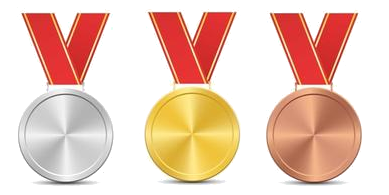 Sport
Sport
 (F)Football Women's World Cup
(F)Football Women's World Cup

 Sport
Sport
 (F)International soccer leagues
(F)International soccer leagues

 Sport
Sport
 (F)AFC Champions League
(F)AFC Champions League

 Sport
Sport
 (F)CAF Champions League
(F)CAF Champions League

 Sport
Sport
 (F)CONCACAF Champions League
(F)CONCACAF Champions League

 Sport
Sport
 (F)Copa Libertadores
(F)Copa Libertadores

 Sport
Sport
 (F)UEFA Champions League
(F)UEFA Champions League

 Sport
Sport
 (F)European football championship
(F)European football championship

 Sport
Sport
 (F)FIFA U-20 World Cup
(F)FIFA U-20 World Cup

 Sport
Sport
 (F)FIFA Confederations Cup
(F)FIFA Confederations Cup

 Sport
Sport
 (F)Soccer Asia Cup
(F)Soccer Asia Cup

 Sport
Sport
 (F)African Cup of Nations
(F)African Cup of Nations
 UEFA Champions League 2015/16
UEFA Champions League 2015/16
 UEFA Champions League 2016/17
UEFA Champions League 2016/17
 UEFA Champions League 2017/18
UEFA Champions League 2017/18
 UEFA Champions League 2018/19
UEFA Champions League 2018/19
 UEFA Champions League 2019/20
UEFA Champions League 2019/20
 UEFA Europa League 2017/18
UEFA Europa League 2017/18
 UEFA Europa League 2018/19
UEFA Europa League 2018/19
 UEFA Europa League 2019/20
UEFA Europa League 2019/20
 UEFA Nations League
UEFA Nations League
 Union of European Football Associations
Union of European Football Associations

 Important International Organizations
Important International Organizations
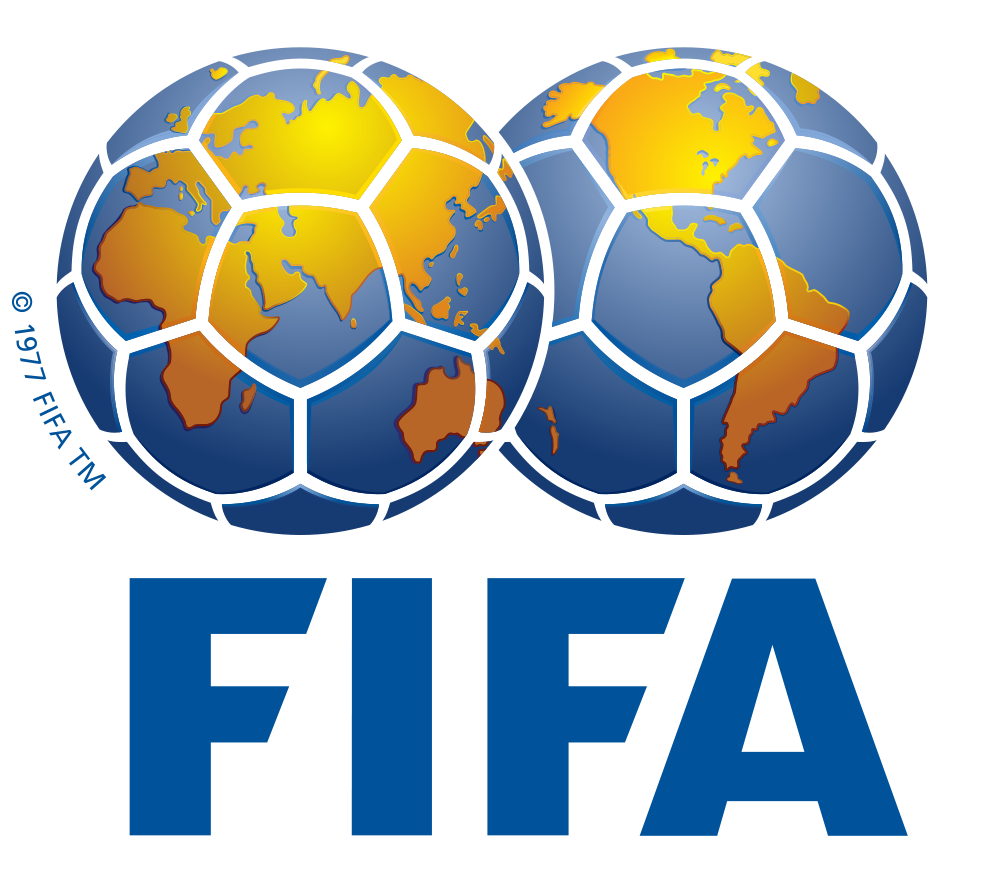
Die Fédération Internationale de Football Association (deutsch Internationaler Verband des Association Football), kurz FIFA oder Fifa, ist ein privater Verband, der „die Kontrolle des Association Football in all seinen Formen“ zum Zweck hat.[3] Der Weltfußballverband ist ein gemeinnütziger Verein im Sinne der Artikel 60 ff. des Schweizerischen Zivilgesetzbuches mit Sitz in Zürich und im Handelsregister eingetragen.[4][5][6] Die FIFA muss als nicht steuerbefreiter Verein im Kanton Zürich eine reduzierte Gewinnsteuer von 4 % entrichten.[1][2]
Die FIFA erwirtschaftet in ihrer aktuellen Vierjahresertragsperiode 5,66 Milliarden Dollar, die zu 89 % aus der Vermarktung der von ihr organisierten Männer-Fußball-WM stammen. Darüber hinaus organisiert sie auch die Frauen-Fußball-WM und zahlreiche weitere Turniere. Ihr Präsident ist Gianni Infantino.
国际足球联合会(法语:Fédération Internationale de Football Association;英语:International Federation of Association Football[注 1]),简称国际足联(FIFA),是管理英式足球、室内五人足球和沙滩足球的国际体育组织,下辖211个会员协会。总部设于瑞士苏黎世。现任主席为吉安尼·因凡蒂诺。国际足联负责组织世界重大足球赛事,当中最著名的是4年举行一次的世界杯。[3]
国際サッカー連盟(こくさいサッカーれんめい、仏: Fédération Internationale de Football Association)は、サッカー(アソシエーション式フットボール)の国際競技連盟であり、スイスの法律に基づいた自立法人である。略称はFIFA(フランス語発音: [fifa] フィファ、英語発音: [ˈfiːfə] フィーファ)。本部はスイスのチューリッヒに置かれている。
2018年時点で全211の国内競技連盟が加盟し[1]、国際競技連盟としては世界最大である[3]。FIFAワールドカップ・FIFA女子ワールドカップの主催が、もっとも大きな任務となっている。
The Fédération Internationale de Football Association[a] (FIFA /ˈfiːfə/ FEE-fə; French for International Federation of Association Football; Spanish: Federación Internacional de Fútbol Asociación; German: Internationaler Verband des Association Football) is a non-profit organization which describes itself as an international governing body of association football, fútsal, beach soccer, and efootball. It is the highest governing body of football.
FIFA was founded in 1904[3] to oversee international competition among the national associations of Belgium, Denmark, France, Germany, the Netherlands, Spain, Sweden, and Switzerland. Headquartered in Zürich, its membership now comprises 211 national associations. Member countries must each also be members of one of the six regional confederations into which the world is divided: Africa, Asia, Europe, North & Central America and the Caribbean, Oceania, and South America.
Today, FIFA outlines a number of objectives in the organizational Statues, including growing football internationally, providing efforts to ensure football is accessible to everyone, and advocating for integrity and fair play.[4] FIFA is responsible for the organization and promotion of football's major international tournaments, notably the World Cup which commenced in 1930 and the Women's World Cup which commenced in 1991. Although FIFA does not solely set the rules of football, that being the responsibility of the International Football Association Board of which FIFA is a member, it applies and enforces the rules across all FIFA competitions.[5] All FIFA tournaments generate revenue from sponsorship; in 2018, FIFA had revenues of over US $4.6 billion, ending the 2015–2018 cycle with a net positive of US$1.2 billion, and had cash reserves of over US$2.7 billion.[6]
Reports by investigative journalists have linked FIFA leadership with corruption, bribery, and vote-rigging related to the election of FIFA president Sepp Blatter and the organization's decision to award the 2018 and 2022 World Cups to Russia and Qatar, respectively. These allegations led to the indictments of nine high-ranking FIFA officials and five corporate executives by the U.S. Department of Justice on charges including racketeering, wire fraud, and money laundering. On 27 May 2015, several of these officials were arrested by Swiss authorities, who were launching a simultaneous but separate criminal investigation into how the organization awarded the 2018 and 2022 World Cups. Those among these officials who were also indicted in the U.S. are expected to be extradited to face charges there as well.[7][8][9] Many officials were suspended by FIFA's ethics committee including Sepp Blatter[10] and Michel Platini.[11] In early 2017 reports became public about FIFA president Gianni Infantino attempting to prevent the re-elections[12] of both chairmen of the ethics committee, Cornel Borbély and Hans-Joachim Eckert, during the FIFA congress in May 2017.[13][14] On 9 May 2017, following Infantino's proposal,[15] FIFA Council decided not to renew the mandates of Borbély and Eckert.[15] Together with the chairmen, 11 of 13 committee members were removed.[16]
La Fédération internationale de football association2 (souvent désignée par l'acronyme FIFA) est la fédération sportive internationale du football, du futsal et du football de plage. Association des fédérations nationales fondée le 21 mai 1904 à Paris, elle a pour vocation de gérer et de développer le football dans le monde. La Coupe du monde de football est créée en 1924 par Jules Rimet3, président de la fédération internationale de 1920 à 1954. Le terme Football Association est le nom originel du football, utilisé pour le distinguer des autres sports de ballon.
Fondée par les fédérations d'Allemagne, de Belgique, du Danemark, d'Espagne, de France, des Pays-Bas, de Suède et de Suisse, elle compte au 13 mai 2016 211 associations nationales affiliées à travers le monde, qui doivent être reconnues par l'une des six confédérations continentales. Son siège est situé depuis 1932 à Zurich, en Suisse.
Bien qu'étant officiellement une association à but non lucratif, la FIFA brasse un chiffre d'affaires très important du fait de l'organisation des compétitions et de leur sponsoring. En 2013, la FIFA génère 1,3 milliard de dollars de chiffre d'affaires, et dispose de réserves évaluées à 1,4 milliard de dollars4. La FIFA est chargée de l'organisation des grands tournois mondiaux, et notamment des Coupes du monde masculines, depuis le 13 juillet 1930, et féminines, depuis le 30 novembre 1991.
Après plusieurs années de rumeurs et d'enquêtes de journalistes sur les affaires financières au sein de la FIFA, notamment autour de l'attribution de l'organisation des Coupes du monde de 2018 et 2022 à la Russie et au Qatar, une enquête lancée par le département de la Justice des États-Unis pour des faits de corruption aboutit à un grand scandale en 2015, à la suite duquel le président Sepp Blatter, le 2 juin 2015, trois jours après sa réélection pour un cinquième mandat, annonce qu'il convoque un congrès extraordinaire, prévu en février 2016, afin de remettre son mandat de président à disposition. Le 8 octobre 2015, la commission d'éthique de la FIFA suspend Sepp Blatter de manière provisoire, pendant 90 jours5. Le 21 décembre 2015, la commission suspend Sepp Blatter pour 8 ans6. Cette suspension est ramenée à six ans le 24 février 2016, peu avant l'élection de son successeur, Gianni Infantino, le 26 février 2016.
La Fédération Internationale de Football Association (in italiano "Federazione internazionale di calcio"[Nota 1]), più nota con l'acronimo FIFA, è la federazione internazionale che governa gli sport del calcio, del calcio a 5 e del beach soccer. La sua sede si trova a Zurigo, in Svizzera, e il presidente è Gianni Infantino, eletto nel 2016.
La federazione fu fondata a Parigi il 21 maggio 1904 e si occupa dell'organizzazione di tutte le manifestazioni intercontinentali degli sport sopraccitati, tra le quali la più importante è sicuramente il Campionato mondiale di calcio, che premia il vincitore con il trofeo della Coppa del Mondo. Tale torneo viene disputato ogni quattro anni dal 1930, eccetto che per il 1942 e il 1946 a causa della Seconda guerra mondiale, e la federazione ha il compito di scegliere il paese organizzatore che ospita la fase finale della manifestazione.
La Fédération Internationale de Football Association2 (en español: Federación Internacional de Fútbol Asociación),3 universalmente conocida por sus siglas FIFA, es la institución que gobierna las federaciones de fútbol en todo el planeta. Se fundó el 21 de mayo de 1904 y tiene su sede en Zúrich, Suiza. Forma parte del IFAB, organismo encargado de modificar las reglas del juego. Además, la FIFA organiza la Copa Mundial de Fútbol, los otros campeonatos del mundo en sus distintas categorías, ramas y variaciones de la disciplina, y los Torneos Olímpicos a la par del COI.
La FIFA agrupa 211 asociaciones o federaciones de fútbol de distintos países, contando con 17 países afiliados más que la Organización de las Naciones Unidas, tres menos que la Asociación Internacional de Federaciones de Atletismo y dos menos que la Federación Internacional de Baloncesto.45
Междунаро́дная федера́ция футбо́ла[1] (фр. Fédération Internationale de Football Association, сокращённо FIFA, в русской транслитерации — ФИФА́) — главная футбольная организация, являющаяся крупнейшим международным руководящим органом в футболе, мини-футболе и пляжном футболе. Штаб-квартира ФИФА находится в швейцарском городе Цюрихе.
Под эгидой ФИФА проходят все футбольные турниры всемирного масштаба, в числе которых чемпионат мира ФИФА, аналогичный турнир среди женщин, молодёжные и юношеские турниры, Кубок конфедераций и клубный чемпионат мира.
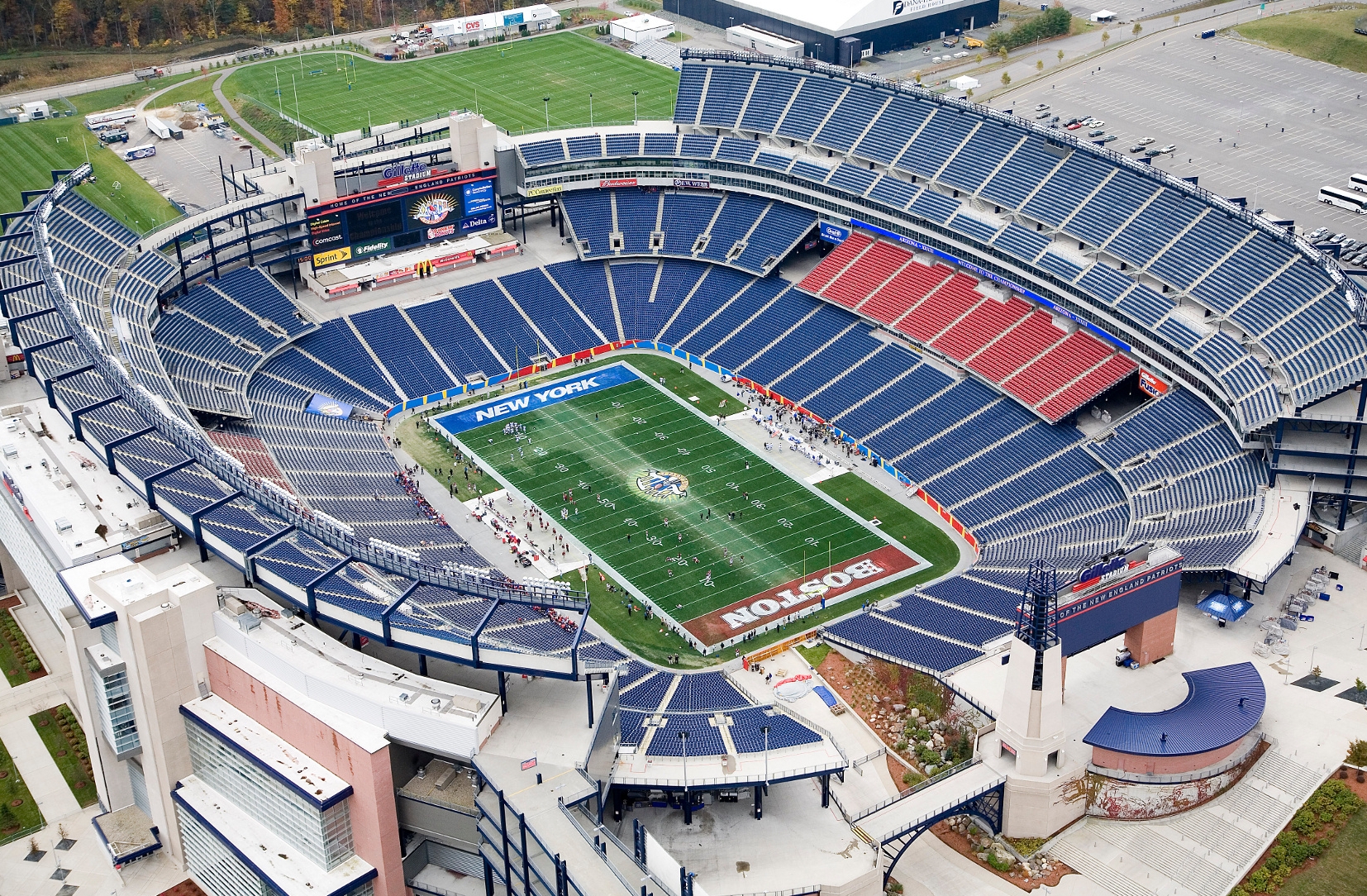
 FIFA Fussball-Weltmeisterschaft 2022
FIFA Fussball-Weltmeisterschaft 2022
 FIFA Fussball-Weltmeisterschaft 2022
FIFA Fussball-Weltmeisterschaft 2022
 Group F
Group F

 FIFA Fussball-Weltmeisterschaft 2026
FIFA Fussball-Weltmeisterschaft 2026
 Canada
Canada

 Sport
Sport
 (F)CONCACAF Gold Cup
(F)CONCACAF Gold Cup

 Sport
Sport
 (F)Soccer at the Olympic Games
(F)Soccer at the Olympic Games
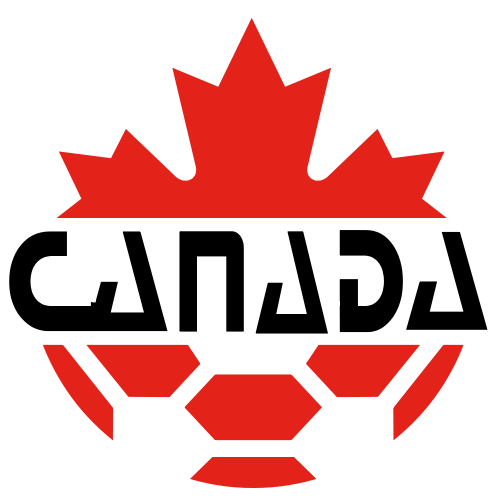

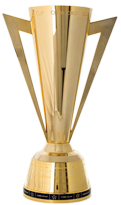
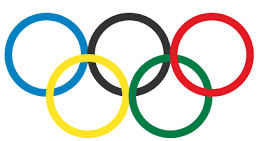
 California State Route 1
California State Route 1

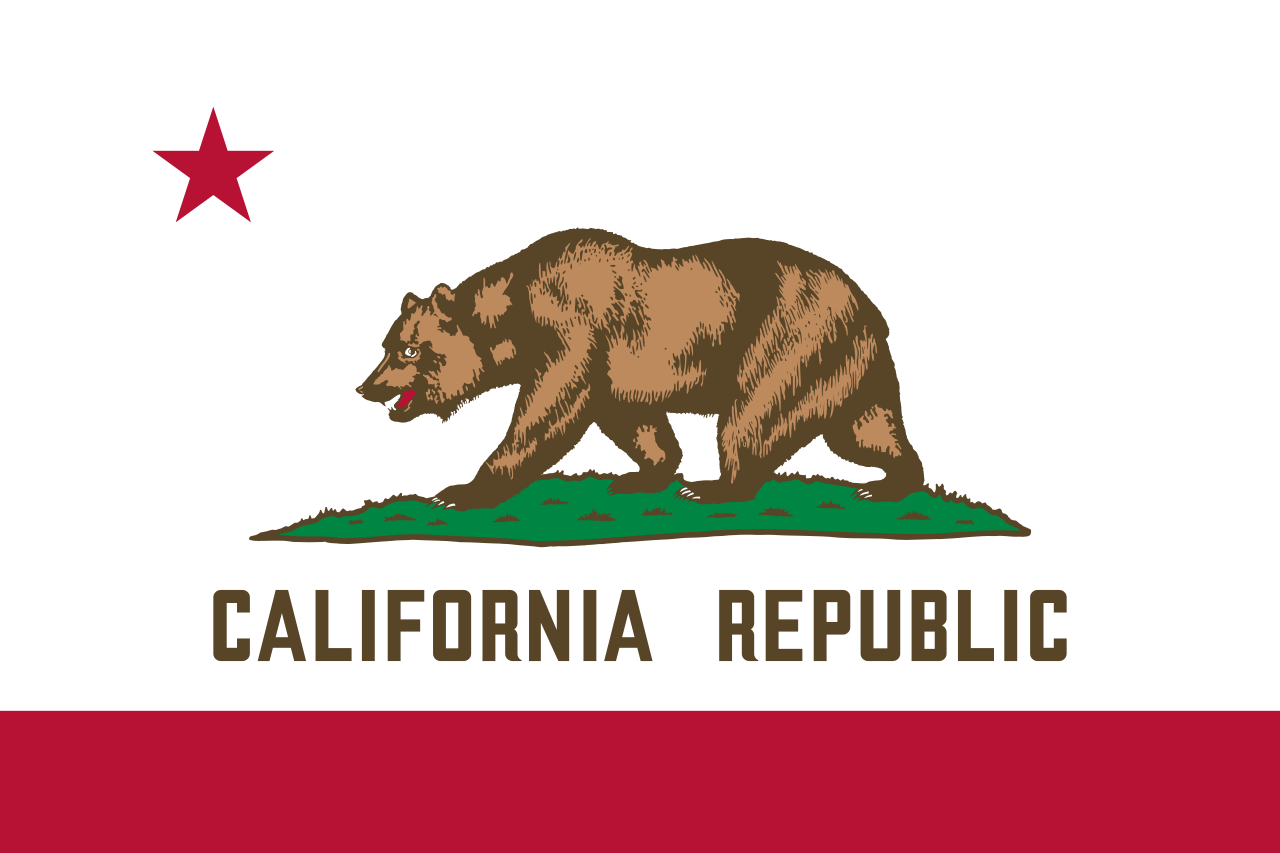 California-CA
California-CA

 FIFA Fussball-Weltmeisterschaft 2026
FIFA Fussball-Weltmeisterschaft 2026

 Financial
Financial
 ***Global Financial Center
***Global Financial Center

 History
History
 M 1500 - 2000 AD
M 1500 - 2000 AD

 History
History
 N 2000 - 2100 AD
N 2000 - 2100 AD

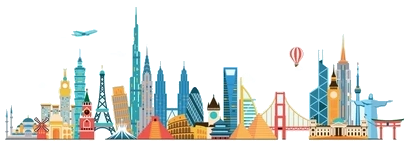 International cities
International cities
 ***Global Urban Economic Competitiveness
***Global Urban Economic Competitiveness
 Silk road
Silk road
 United States
United States

 Important port
Important port
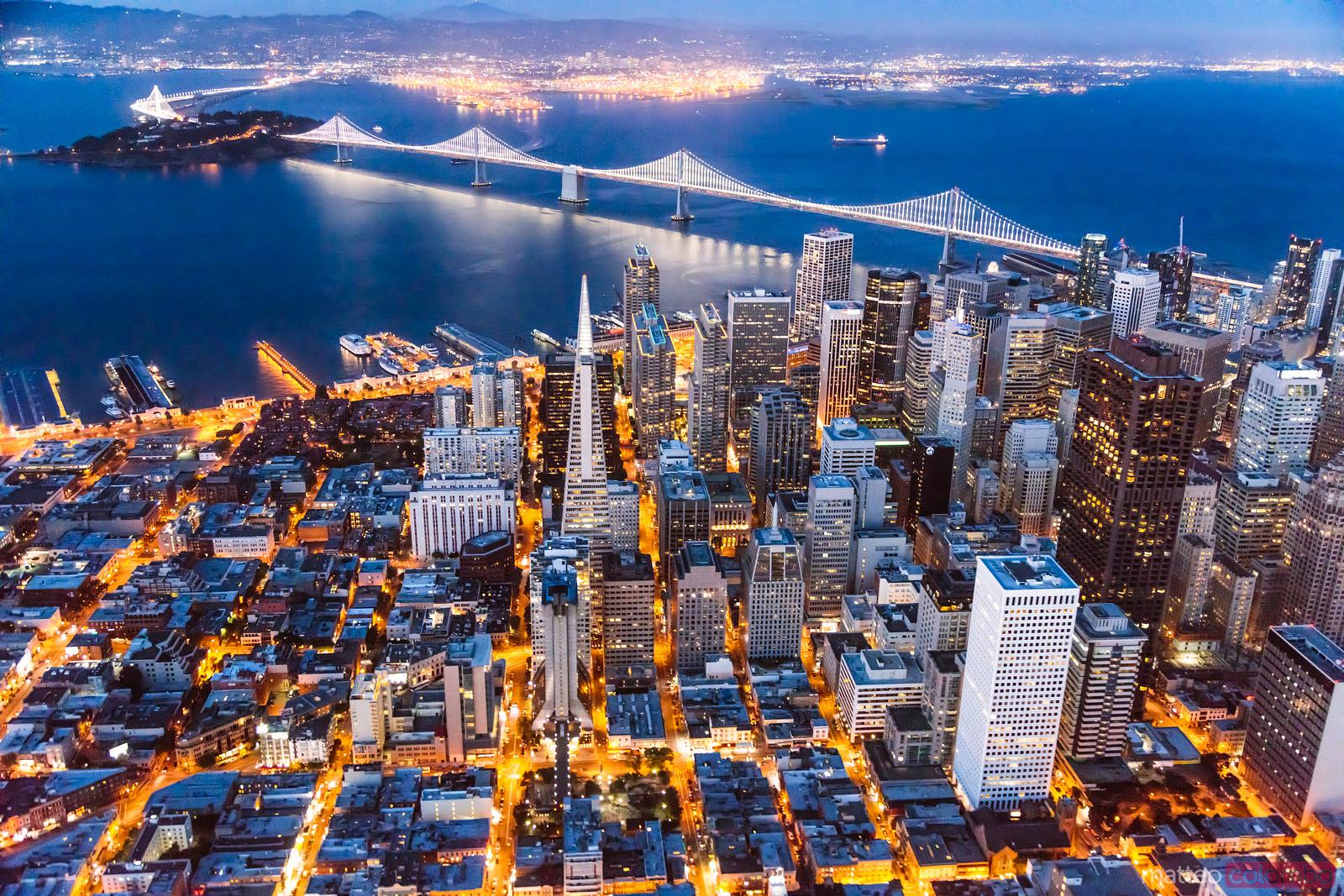
San Francisco (Aussprache: ˌsæn fɹənˈsɪskoʊ, auch San Franzisko[3]), offiziell City and County of San Francisco (Stadt und Kreis von San Francisco), ist eine Stadt und eine Metropolregion im US-Bundesstaat Kalifornien an der Westküste der Vereinigten Staaten am Pazifischen Ozean. Mit 805.195 Einwohnern (Stand der Volkszählung 2010)[4] ist sie die viertgrößte Stadt Kaliforniens. Im globalen Vergleich gilt sie neben ähnlich großen Städten wie etwa Frankfurt am Main oder Amsterdam als mittelgroße Weltstadt.
Der Name der Stadt ist spanischen Ursprungs. San Francisco ist nach dem Heiligen Franziskus, also Franz von Assisi, benannt.
太平洋沿岸仅次于洛杉矶的第二大港市。位于加利福尼亚州西北部,美国西海岸中点。市区面积119平方公里,人口72.4万(1990),为美国西部人口密度最高的城市。大市区包括附近4个县和奥克兰、伯克利等城镇,面积7475平方公里。
城市座落在宽不足10公里的半岛北端,介于太平洋和圣弗朗西斯科湾之间,北临金门海峡。市域内丘陵起伏,有双峰山、戴维森山,最著名者为诺布山; 沿海地带较为平坦。南流的萨克拉门托河和北流的圣华金河在城市附近汇合后,向西注入圣弗朗西斯科湾。因地处圣安德烈斯大断层上,多地震。气候宜人,冬季温 和,1月平均气温9℃;夏季凉爽,7月平均气温17.8℃。年平均降水量约500毫米,以冬雨为主,夏日多雾。1776年为西班牙移民拓居地。1806年俄国在此设哨所,作为当时俄届阿拉斯加的物资供应站。1821年属墨西哥。1846年归美国时,为居民不到干人的小镇。1848年附近地区发现金矿,大批淘金者涌入,包括第一批中国“契 约劳工”。1850年设市时,人口已增至2.5万人,成为贸易和为矿业服务的中心,附近地区的农业也有所发展。18邱年后随着横贯大陆铁路的通达和港区设 施的逐步完善,城市迅速发展。1880年后开始向海湾以东地区扩展,形成若干卫星城镇,19世纪末,人口已达34万。1906年大地震时全城80%建筑被 毁,后迅速重建。1914年巴拿马运河通航,港口日益繁荣,贸易量激增。第二次世界大战中,为军需物资的重要供应站。战后,工、商、金融、旅游服务业和市政建设均有较大发展,大市区由单一中心扩展为由旧金山、海湾东区(奥克兰)和圣何塞三大中心组成的城镇群。
旧金山(英语:San Francisco),正式名称为旧金山市县(City and County of San Francisco),是位于美国加利福尼亚州北部的都市,为加州唯一市县合一的行政区,中文又音译为三藩市和圣弗朗西斯科,亦别名“金门城市”、“湾边之城”、“雾城”等。位于旧金山半岛的北端,东临旧金山湾、西临太平洋,人口约86万,为加州第四大城;其与湾边各都市组成的旧金山湾区,人口总数达768万,是仅次于大洛杉矶地区的美国西岸第二大都会区[4]。
旧金山是北加州与旧金山湾区的核心都市,当地住有很多艺术家、作家和演员,在20世纪及21世纪初一直是美国嬉皮士文化和近代自由主义、进步主义的中心之一。旧金山也是联合国的诞生地[5][6][7]。旧金山是受欢迎的旅游目的地[8],以其凉爽的夏季、多雾、绵延的丘陵地形、混合的建筑风格,以及金门大桥、缆车、恶魔岛监狱及唐人街等景点闻名。此外,旧金山也是五大主要银行及许多大型公司、机构的总部所在,其中又以互联网产业为最,包括盖璞、太平洋瓦电公司、Yelp、Dropbox、Pinterest、Twitter、优步、爱彼迎、Mozilla、维基媒体基金会、克雷格列表、Salesforce.com等。
サンフランシスコ市郡(英語: City and County of San Francisco、通称: San Francisco[1])は、アメリカ合衆国西海岸にあるカリフォルニア州の北部に位置する都市。
キリスト教のフランシスコ会の修道士が創設者の聖フランシスコを街の名に付けたのが地名の由来である。漢字では、桑港や旧金山と表記される。桑港は、「サンフランシスコ」を音訳した「桑方西斯哥」(現代中国語普通話ではSāngfāngxīsīgē(サンファンシースーグー)の発音になる)の頭文字「桑」(サン)に、港町である事を示す「港」を加えたものである。この漢字表記は、現地の日系社会でも使われるため、商店や日本語学校などの名称によく見られる。ジャパンタウン(日本人街)にある曹洞宗の寺院「日本山桑港寺(そうこうじ)」はその代表である。一方の旧金山(舊金山)は、1849年に起こったカリフォルニア・ゴールドラッシュにちなんだ名称である。当初この地に労働者としてきた華人たちはサンフランシスコを「金山」と呼んだが、後にオーストラリア・ビクトリア州など他の地域でもゴールドラッシュが起きるとサンフランシスコは旧金山と呼ばれるようになった(「新金山」はメルボルンを指す)。現地の中国系社会では桑港と同様に広東語で「サンファンシー」の音を当てた三藩市が旧金山よりも多用される傾向があり、市当局も中文での名称を三藩市としている[2]。
アメリカの他地域では頭文字の「SF」や「フリスコ(Frisco)」愛称・略称で呼ばれることが多い。または「サンフラン」(San-Fran)との略称で呼ばれることもある。日本では、特に(航空機での渡航の対象として)「シスコ」の略称で呼ばれることも多い。地元とベイエリア周辺では単純に愛情を込めて「the city」と呼ばれることが多い。
ロサンゼルスと共にカリフォルニア州の経済、工業の中心地として知られており、金融センターとしてアメリカ西海岸では随一の重要性を持っている。2017年の調査によると、世界6位の金融センターであり、アメリカの都市ではニューヨークに次ぐ2位である[3]。サンフランシスコ自体の人口は776,733人(2000年国勢調査)だが、対岸のオークランドなどを含めた都市圏(MSA)の人口は4,123,747人にも上り、全米第12位の規模。更に南岸のサンノゼを加えたサンフランシスコ・ベイエリア全体の人口は7,092,596人で広域都市圏(合同統計地域: CSA)としては全米6番目の規模である。(いずれも2000年国勢調査)それゆえに大規模なダウンタウンが形成されており、近代的なビルが建ち並ぶ。シリコンバレーやカリフォルニア大学バークレー校にも近く、コンピュータ系の企業も多い。
気候は地中海性気候に属し、一年を通して気温の差が比較的小さく、気候的にも住みやすい都市である。急な坂が多く、深い霧に覆われることでも有名である。都市部から13マイルほど南下すると、サンフランシスコ国際空港がある。
観光地としての評価も非常に高い都市であり、外国人のみならず、アメリカ人の間でも訪れたい都市の上位にランクされている。有名な観光スポットとしてゴールデン・ゲート・ブリッジ(金門橋)やフィッシャーマンズワーフ、ツインピークス等が挙げられる。市内を走る伝統あるケーブルカーも人気が高い。
アメリカのシンクタンクが2017年に発表した総合的な世界都市ランキングにおいて、世界13位の都市と評価された[4]。アメリカの都市ではニューヨーク、ロサンゼルス、シカゴに次ぐ4位である。
世界的に著名な都市なので、ロサンゼルスと共に州都であると思われがちだが、誤りである(実際の州都はサクラメント。米国は原則として中小都市に州政府を置く伝統があり、ニューヨークもシカゴも州都ではない)。
San Francisco (SF; /ˌsæn frənˈsɪskoʊ, fræn-/; Spanish for 'Saint Francis'; Spanish: [san franˈsisko]), officially the City and County of San Francisco, is the cultural, commercial, and financial center of Northern California. San Francisco is the 13th most populous city in the United States, and the 4th most populous in California, with 884,363 residents as of 2017.[18] It covers an area of about 46.89 square miles (121.4 km2),[19] mostly at the north end of the San Francisco Peninsula in the San Francisco Bay Area, making it the second most densely populated large US city, and the fifth most densely populated U.S. county, behind only four of the five New York City boroughs. San Francisco is also part of the fifth most populous primary statistical area in the United States, the San Jose–San Francisco–Oakland, CA Combined Statistical Area (8.8 million residents).
As of 2016, it was the 7th highest-income county in the United States, with a per capita personal income of $110,418.[20] The San Francisco CSA was the country's 3rd largest urban economy as of 2017, with a GDP of $878 billion.[21] Of the 574 primary statistical areas in the US, the San Francisco CSA had the highest GDP per capita in 2017, at $99,347 per capita.[21] San Francisco was ranked 14th in the world and third in the United States on the Global Financial Centres Index as of September 2018.[22]
San Francisco was founded on June 29, 1776, when colonists from Spain established Presidio of San Francisco at the Golden Gate and Mission San Francisco de Asís a few miles away, all named for St. Francis of Assisi.[2] The California Gold Rush of 1849 brought rapid growth, making it the largest city on the West Coast at the time. San Francisco became a consolidated city-county in 1856.[23] San Francisco's status as the West Coast's largest city peaked between 1870 and 1900, when around 25% of California's population resided in the city.[24] After three-quarters of the city was destroyed by the 1906 earthquake and fire,[25] San Francisco was quickly rebuilt, hosting the Panama-Pacific International Exposition nine years later. In World War II, San Francisco was a major port of embarkation for service members shipping out to the Pacific Theater.[26] It then became the birthplace of the United Nations in 1945.[27][28][29] After the war, the confluence of returning servicemen, significant immigration, liberalizing attitudes, along with the rise of the "hippie" counterculture, the Sexual Revolution, the Peace Movement growing from opposition to United States involvement in the Vietnam War, and other factors led to the Summer of Love and the gay rights movement, cementing San Francisco as a center of liberal activism in the United States. Politically, the city votes strongly along liberal Democratic Party lines.
A popular tourist destination,[30] San Francisco is known for its cool summers, fog, steep rolling hills, eclectic mix of architecture, and landmarks, including the Golden Gate Bridge, cable cars, the former Alcatraz Federal Penitentiary, Fisherman's Wharf, and its Chinatown district. San Francisco is also the headquarters of five major banking institutions and various other companies such as Levi Strauss & Co., Gap Inc., Fitbit, Salesforce.com, Dropbox, Reddit, Square, Inc., Dolby, Airbnb, Weebly, Pacific Gas and Electric Company, Yelp, Pinterest, Twitter, Uber, Lyft, Mozilla, Wikimedia Foundation, Craigslist, and Weather Underground. It is home to a number of educational and cultural institutions, such as the University of San Francisco (USF), University of California, San Francisco (UCSF), San Francisco State University (SFSU), the De Young Museum, the San Francisco Museum of Modern Art, and the California Academy of Sciences.
San Francisco (en anglais [sæn frənˈsɪskoʊ]), officiellement City and County of San Francisco, est une ville américaine et un comté de l'État de Californie. Elle est située à l'extrémité nord de la péninsule de San Francisco, entre l'océan Pacifique à l'ouest et la baie de San Francisco à l'est. Son nom est couramment abrégé en SF et la ville est surnommée The City by the Bay4.
Fondée en 1776 par des Espagnols au sein de la Viceroyauté de la Nouvelle-Espagne, la ville, nommée en l'honneur de San Francisco de Asís, prend son essor lors de la ruée vers l'or et son prolongement, l'embellissement de San Francisco par les millionnaires du Nevada. Puis, elle devient le berceau du jeans avec la fondation de Levi Strauss & Co. Les années 1950 voient la naissance de la Beat Generation. À partir de la deuxième partie du XXe siècle, l'industrie des hautes technologies se développe dans la région de la baie. Aujourd'hui San Francisco est la ville la plus densément peuplée des États-Unis après New York. La municipalité-comté5 de San Francisco compte 805 235 habitants dans ses limites administratives6 et plus de 7 millions de personnes vivent dans l'aire métropolitaine de La Baie7, la quatrième métropole des États-Unis par sa population. La partie sud de cette dernière est occupée par la municipalité de San José et la Silicon Valley, premier pôle de hautes technologies des États-Unis qui accueille un nombre important d'entreprises de technologie de pointe de renommée mondiale telles que Cisco, Apple, Tesla Motors, Hewlett-Packard, Google, Intel ou encore Facebook8. Dans le domaine universitaire, elle accueille les prestigieuses9 université Stanford et université de Californie à Berkeley. San Francisco est également le siège de la Wikimedia Foundation dont fait partie le projet Wikipédia. Au nord s'étendent la Napa Valley et la Sonoma Valley, renommées pour leur viticulture. San Francisco fait partie des villes progressistes dans le domaine de l'écologie10,11 et du développement durable12,13,14.
Troisième destination touristique préférée des français aux États-Unis15, la ville est célèbre pour le pont du Golden Gate, l'île et ancienne prison d'Alcatraz, Fisherman's Wharf, la Transamerica Pyramid, la Coit Tower, ses maisons victoriennes, ses cable cars et ses nombreuses collines découpées de rues en pente. Haut lieu de la contre-culture, ville de tolérance et d'émancipation des minorités, San Francisco est également connue pour son Chinatown, ses quartiers homosexuels comme Le Castro, et hippie. Elle représente un foyer culturel et économique majeur aux États-Unis et accueille chaque année plusieurs événements d'ampleur mondiale16 mais vibre également au rythme des festivités animées par les différentes communautés locales17. Elle se revendique comme une ville sanctuaire pour les sans papiers depuis 198918. Sur le plan sportif, les 49ers au football américain, les Giants au baseball et les Warriors au basket-ball sont les équipes phares de la ville.
San Francisco (AFI: [sanfranˈsisko][1]; in inglese /ˌsæn frənˈsɪskoʊ/) è una città statunitense, la quarta della California per numero di abitanti (dopo Los Angeles, San Diego e San Jose), con una popolazione stimata nel 2016 di 870 887 abitanti, stima che la colloca al dodicesimo posto fra le città più popolose degli Stati Uniti d'America e allo stesso tempo al secondo posto per densità di popolazione, dietro solo a New York.[2] La città fa parte di una vasta area metropolitana (circa 7 milioni di abitanti,[3] la quinta dell'intero Paese), la San Francisco Bay Area, di cui è sempre stata il centro economico-finanziario, culturale e turistico, anche se ha ormai perso il primato di popolazione.
San Francisco è una popolare meta di molti turisti internazionali, ed è conosciuta per la sua fresca nebbia estiva, per le sue ripide colline, per la sua vivacità culturale e il suo eclettismo architettonico, che affianca stile vittoriano e architettura moderna, per i suoi famosi paesaggi, incluso il Golden Gate Bridge, per i suoi tram e per Chinatown. L'Università della California, San Francisco è uno dei principali centri biomedici del mondo, e l'ospedale è tra i principali degli Stati Uniti.
San Francisco, de forma oficial Ciudad y Condado de San Francisco (en inglés: City and County of San Francisco), es una ciudad que ocupa la cuarta posición de ciudad más poblada del estado de California y la 13.ª de Estados Unidos, con una población de aproximadamente 837 442 habitantes en 2013.6 Es la única ciudad-condado consolidada de California, y al abarcar una superficie territorial de 121 km², cuenta con la segunda densidad de población más alta del país entre las ciudades que superan los 200 000 habitantes, tras Nueva York.7 Es el centro cultural, financiero y de transportes del Área de la Bahía de San Francisco, una aglomeración metropolitana con más de siete millones de habitantes.89 Se encuentra en el extremo norte de la península de San Francisco, con el océano Pacífico al oeste, la bahía homónima al este y la entrada de la bahía al norte, por lo que solamente está conectada con tierra firme por su extremo sur.
La ciudad de San Francisco fue fundada por colonos españoles en 1776. Construyeron un fuerte en lo que hoy es el Golden Gate y fundaron una misión llamada así en honor de Francisco de Asís.10 San Francisco perteneció al Virreinato de la Nueva España hasta la independencia de México en 1821. Tras la Intervención estadounidense en México entre 1845 y 1848, la ciudad y el resto de Alta California pasaron a ser territorio estadounidense.
En 1848, la fiebre del oro de California impulsó a la ciudad a un período de rápido crecimiento, pasando de 1000 a 25 000 habitantes en un año,11 lo que convirtió a la ciudad en la más grande de la Costa oeste en aquella época. Después de haber sido devastada por el terremoto e incendio de 1906,12 San Francisco fue rápidamente reconstruida, siendo sede de la Exposición Internacional de Panamá y el Pacífico nueve años más tarde.13 Durante la Segunda Guerra Mundial, la ciudad fue el puerto de embarque de miles de soldados que partían hacia la Guerra del Pacífico.14 Tras la contienda, la confluencia de los militares que regresaban, la inmigración masiva, las actitudes liberales y otros factores dieron lugar al denominado Verano del Amor y los movimientos en favor de los derechos de los homosexuales,15 consolidando a San Francisco como un bastión liberal en los Estados Unidos.
La ciudad incluye varias islas localizadas dentro la bahía (siendo la más famosa Alcatraz), así como los Farallones, que se sitúan a 43 kilómetros de la costa en el océano Pacífico.16 Se comunica con el resto del país y del mundo por medio del Aeropuerto Internacional de San Francisco.
San Francisco es un destino popular para los turistas internacionales, siendo famosa por el puente Golden Gate, el edificio Pirámide Transamérica, los tranvías que recorren sus empinadas calles, su arquitectura modernista y victoriana y por su barrio chino, popularmente llamado Chinatown.17 En las cercanías de San Francisco se encuentra Silicon Valley, gran centro de investigaciones en tecnología y cibernética. La ciudad también es un importante centro financiero y bancario, ya que es sede de más de treinta instituciones financieras,18 lo que ha ayudado a hacer de San Francisco la decimoctava ciudad del mundo por PIB en 2008 y la novena de los Estados Unidos.19
Actualmente es la segunda ciudad estadounidense con mejor calidad de vida, solamente superada por Honolulu20
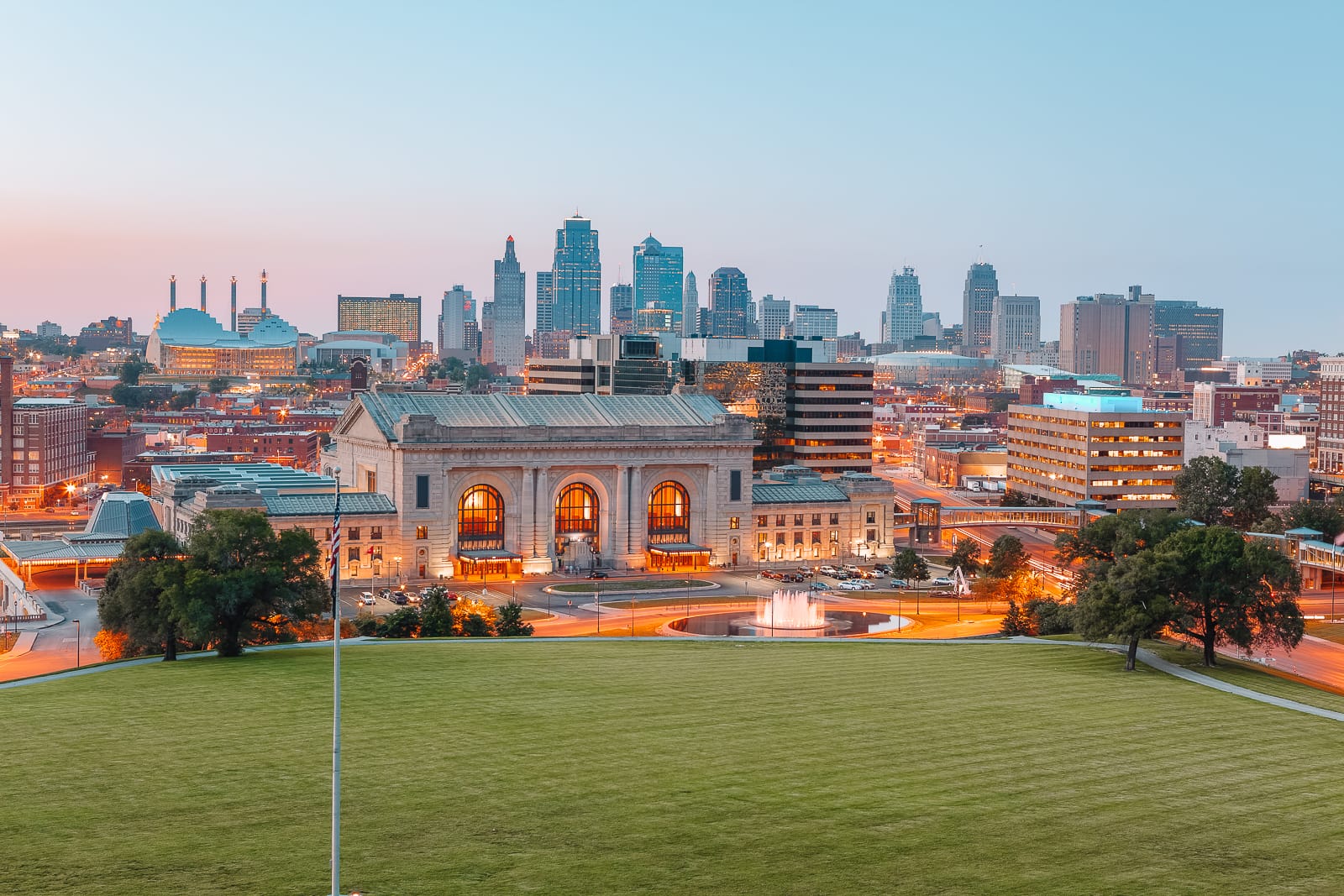
Kansas City ist mit rund 508.090 Einwohnern (Volkszählung 2020 des U.S. Census Bureau) die größte Stadt im US-Bundesstaat Missouri. Ihr Stadtgebiet erstreckt sich über die vier Countys Clay, Cass, Jackson und Platte.
Die Stadt wird häufig mit KCMO abgekürzt. Die beiden letzten Buchstaben MO sind der Postcode für Missouri und werden an die führenden Buchstaben KC des Städtenamens angehängt. Das vermeidet Verwechslungen mit dem deutlich kleineren Kansas City (Kansas) im gleichnamigen Bundesstaat, das unmittelbar hinter der Grenze beider Bundesstaaten liegt. Zusammen mit ihrer Schwesterstadt und den umliegenden Gemeinden lag die Bevölkerungszahl der gesamten Metropolregion Kansas City im Jahr 2009 bei etwa 2,1 Mio. Einwohnern;[1] die Region ist damit nach Greater St. Louis das zweitgrößte Ballungszentrum am Missouri River.
堪萨斯城(英语:Kansas City, Missouri,常缩写成KCMO,也译“垦士雪地”, 为美国密苏里州的一座城市,包含密苏里州杰克逊(Jackson)、克莱(Clay)、卡斯(Cass)和普拉特(Platte)四个县,是杰克逊县最大城市、密苏里州最大城市,美国第三十七大城市。位处密苏里河与堪萨斯河交汇处、密苏里州及堪萨斯州交界,面对堪萨斯州堪萨斯城(堪萨斯城横跨密苏里州与堪萨斯州,因此两州在州界两侧各设有一个同名城市)。
在中西部是第七大城市,界乎克里夫兰和奥马哈之间。根据美国2016年人口普查,人口481,420人。加上堪萨斯州堪萨斯城人口588,411,都会区人口2,159,159。由于城市及都会区不断成长,英国伯明翰大学的“全球化与世界级城市研究小组与网络”(the Globalization and World Cities Study Group and Network),把堪萨斯城列为“具世界级城市潜力城市”之一。


 FIFA Fussball-Weltmeisterschaft 2026
FIFA Fussball-Weltmeisterschaft 2026
 FIFA Club World Cup 2025
FIFA Club World Cup 2025
 National Football League 2018
National Football League 2018

 Pennsylvania-PA
Pennsylvania-PA

 Sport
Sport
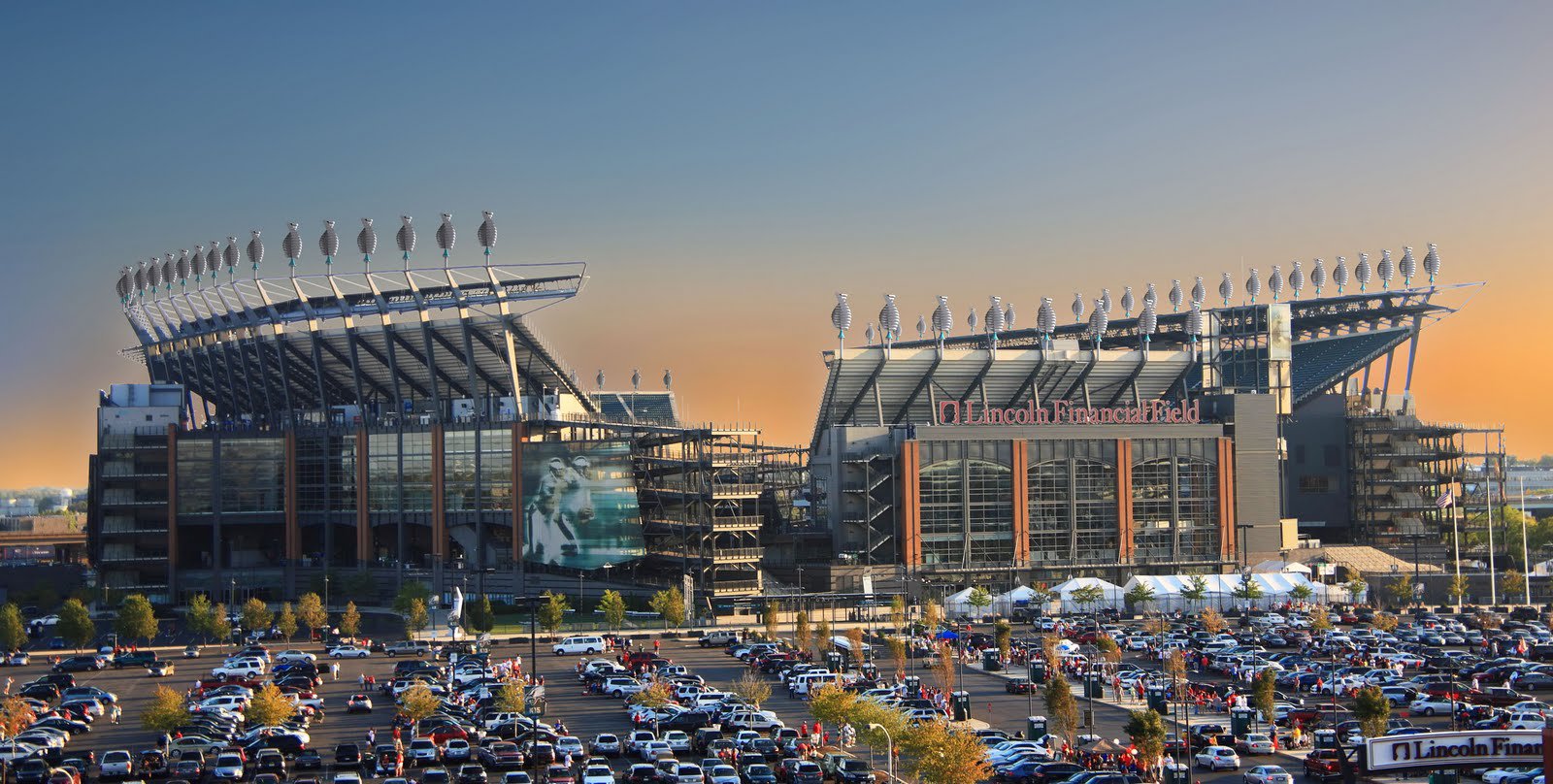
 California State Route 1
California State Route 1

 California-CA
California-CA

 FIFA Fussball-Weltmeisterschaft 2026
FIFA Fussball-Weltmeisterschaft 2026

 Financial
Financial
 ***Global Financial Center
***Global Financial Center

 History
History
 N 2000 - 2100 AD
N 2000 - 2100 AD

 History
History
 M 1500 - 2000 AD
M 1500 - 2000 AD

 International cities
International cities
 ***Global Urban Economic Competitiveness
***Global Urban Economic Competitiveness
 League of Legends
League of Legends
 League of Legends World Championship
League of Legends World Championship
 Olympic Summer Games
Olympic Summer Games
 United States
United States

 Important port
Important port



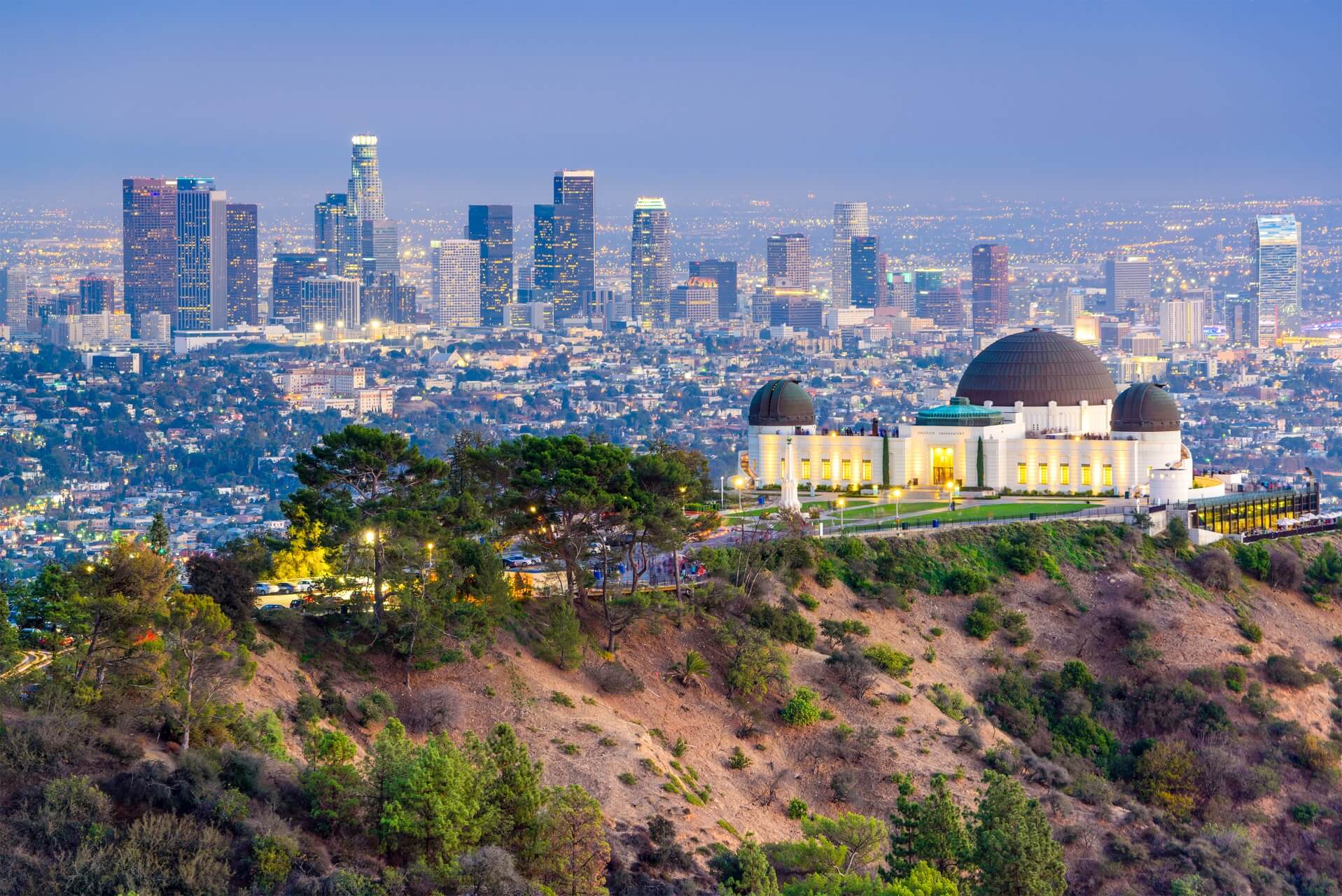
洛杉矶(英语:City of Los Angeles,缩写为L.A.),简称洛城,是位于美国加利福尼亚州南部的都市,也是洛杉矶县的县治,人口约397万[8],为加州第一大城,同时也是美国人口第二大都市,仅次于纽约市。全市面积为469.1平方英里(1214.9平方公里)。由洛杉矶、长滩、安那翰3市组成的洛杉矶都会区拥有约1331万的人口[9],涵盖范围更广的大洛杉矶地区则达到1870万[10],两者在统计上均次于纽约都会区,为全美国第二大都会区。
洛杉矶在1781年由西属上加利福尼亚总督费利佩·德·内维建立。它曾先后属于西班牙与墨西哥,但在1848年美墨战争结束后,墨西哥将包括洛杉矶在内的上加利福尼亚地区割让给美国。1850年4月4日,洛杉矶正式建市,比加州加入联邦的时间早了5个月。时至今日,洛杉矶已发展成为全世界的文化、科学、技术、体育、国际贸易和高等教育中心之一,还拥有世界知名的各种专业与文化领域的机构。整个大洛杉矶地区在电影、电视、音乐等文化娱乐产业的蓬勃发展,构成了洛杉矶的国际声誉和全球地位的基础。截至2014年,洛杉矶的大都市生产总值达8605亿美元,排名世界第三。
Los Angeles [lɔs ˈændʒələs] (aus dem spanischen Los Ángeles [losˈaŋxeles] ‚Die Engel‘) oder auch kurz L.A., ist die größte Stadt im US-Bundesstaat Kalifornien. Sie liegt am Pazifischen Ozean und am Los Angeles River.
Los Angeles ist mit 3.928.864 Einwohnern (2014)[1] im Stadtgebiet nach New York City und vor Chicago die zweitgrößte Stadt der Vereinigten Staaten.[2] Mit 11,8 Millionen Einwohnern in der Agglomeration[3] sowie über 12,8 Millionen Einwohnern in der Metropolregion (Metropolitan Statistical Area) und knapp 17,8 Millionen in der erweiterten Metropolregion steht die Greater Los Angeles Area unter den größten Metropolregionen der Welt an 17. Stelle.[4] Die Einwohner von Los Angeles werden Angelenos [ændʒəˈlinoʊz] genannt.
Los Angeles ist Hauptstadt und Verwaltungssitz des Los Angeles County. Die Stadt ist das Wirtschafts-, Geschäfts- und Kulturzentrum Kaliforniens mit zahlreichen Universitäten, Hochschulen, Forschungsinstituten, Theatern und Museen. Los Angeles ist weltgrößter Standort für die Flugzeug- und Raumfahrtindustrie und bekannt wegen der dort ansässigen Film- und Fernsehindustrie (Hollywood) und Musikszene.
Die Metropolregion Los Angeles erbrachte 2016 eine Wirtschaftsleistung von 1,001 Billionen US-Dollar. Unter den Städten der Welt belegt es damit den dritten Rang hinter Tokio und New York City.[5]
ロサンゼルス(英語: Los Angeles、スペイン語も同じ)は、アメリカ合衆国カリフォルニア州にある都市。同州最大の都市かつ全米有数の世界都市であり、国内ではニューヨークに次いで人口が多い[1]。
Los Angeles (US: /lɔːs ˈændʒələs/ ( listen);[16][a] Spanish for "The Angels"; Spanish: Los Ángeles; Spanish: [los ˈaŋxeles]; officially the City of Los Angeles, known colloquially by its initials L.A.) is the second-most populous city in the United States, after New York City, and the most populous city in the Western United States. With an estimated population of four million,[17] Los Angeles is the largest and most populous city in the state of California and the cultural, financial, and commercial center of Southern California. Nicknamed the "City of Angels" partly because of its name's Spanish meaning, Los Angeles is known for its Mediterranean climate, ethnic diversity, and sprawling metropolis.
listen);[16][a] Spanish for "The Angels"; Spanish: Los Ángeles; Spanish: [los ˈaŋxeles]; officially the City of Los Angeles, known colloquially by its initials L.A.) is the second-most populous city in the United States, after New York City, and the most populous city in the Western United States. With an estimated population of four million,[17] Los Angeles is the largest and most populous city in the state of California and the cultural, financial, and commercial center of Southern California. Nicknamed the "City of Angels" partly because of its name's Spanish meaning, Los Angeles is known for its Mediterranean climate, ethnic diversity, and sprawling metropolis.
Los Angeles is located in a large basin bounded by the Pacific Ocean on one side and by mountains as high as 10,000 feet (3,000 m) on the others. The city proper, which covers about 469 square miles (1,210 km2),[18] is the seat of Los Angeles County, the most populated county in the country. Los Angeles is the principal city of the Los Angeles metropolitan area; with a population of 13.1 million residents it is the second largest in the United States after that of New York City.[19] It is part of the Los Angeles-Long Beach combined statistical area, also the second most populous in the nation with a 2015 estimated population of 18.7 million.[20]
Los Angeles is one of the most substantial economic engines within the United States, with a diverse economy in a broad range of professional and cultural fields. Los Angeles is also famous as the home of Hollywood, a major center of the world entertainment industry. A global city, it has been ranked 6th in the Global Cities Index and 9th in the Global Economic Power Index. The Los Angeles combined statistical area also has a gross metropolitan product of $831 billion (as of 2008), making it the third-largest in the world, after the Tokyo and New York metropolitan areas. Los Angeles hosted the 1932 and 1984 Summer Olympics and will host the event for a third time in 2028. The city also hosted the Miss Universe pageant twice, in 1990 and 2006.
Historically home to the Chumash and Tongva, Los Angeles was claimed by Juan Rodríguez Cabrillo for Spain in 1542 along with the rest of what would become Alta California. The city was officially founded on September 4, 1781, by Spanish governor Felipe de Neve. It became a part of Mexico in 1821 following the Mexican War of Independence. In 1848, at the end of the Mexican–American War, Los Angeles and the rest of California were purchased as part of the Treaty of Guadalupe Hidalgo, becoming part of the United States. Los Angeles was incorporated as a municipality on April 4, 1850, five months before California achieved statehood. The discovery of oil in the 1890s brought rapid growth to the city.[21] The completion of the Los Angeles Aqueduct in 1913, delivering water from Eastern California, later assured the city's continued rapid growth.
Los Angeles (prononcé en anglais américain [lɑs ˈæn.dʒə.ləs] Écouter)n 1 est la deuxième ville la plus peuplée des États-Unis après New York. Elle est située dans le sud de l'État de Californie, sur la côte pacifique. Les Américains l'appellent souvent par son diminutif, L.A. (prononcé [ˌɛlˈeɪ]). La ville est le siège du comté portant le même nom. Los Angeles signifie « les anges » en espagnol et ses habitants sont appelés Angelenos (quelquefois Angelinos) — les Angelins. Son nom complet est El Pueblo de Nuestra Señora la Reina de Los Ángeles del Río de Porciúncula, c'est-à-dire « le village de Notre-Dame la Reine des Anges du fleuve de Porciuncula », Porciuncula étant le nom donné au fleuve Los Angeles par les Amérindiens2.
Selon une estimation, la population de la commune est de 3 976 322 habitants en 2016, alors qu'elle n'était que de 11 500 en 1887. Le comté rassemble 10 179 716 habitants (en juillet 2004) alors que l'aire urbaine de Los Angeles compte environ 18,5 millions d’habitants3, ce qui en fait la deuxième agglomération des États-Unis après celle de New York. Mais la commune de Los Angeles est relativement restreinte face à son agglomération, même si elle est plus grande que New York et Chicago.
Los Angeles est une ville olympique : elle accueille les Jeux olympiques d'été deux fois (en 1932 et 1984), et les accueillera de nouveau en 2028. Mondialement connue pour son activité culturelle (notamment via la production cinématographique à Hollywood), elle a un statut de ville-région mondiale (world city-region)4 ; cosmopolite, elle demeure l'un des points d'entrée d'immigrants les plus importants aux États-Unis.
Los Angeles (pronuncia inglese [lɒs ˈændʒələs]; pronuncia italiana[4]: [loˈzɛndʒeles] o [loˈzandʒeles]; pronuncia spagnola [los ˈaŋxeles]), spesso abbreviata in L.A., è una città degli Stati Uniti d'America, capoluogo dell'omonima contea, situata nella California meridionale. Con 4 057 875 abitanti (nel 2017[3]), è la città più popolosa della California e la seconda più popolosa degli Stati Uniti d'America dopo New York.
Fondata dagli spagnoli come El Pueblo de Nuestra Señora la Reina de los Ángeles del Rio de la Porciúncula de Asís[5], ovvero "Il villaggio di santa Maria degli Angeli della Porziuncola di Assisi", assurse allo status di città il 9 giugno 1850, cinque mesi prima che la California diventasse il trentesimo Stato dell'Unione.
È un centro economico e scientifico di rilevanza internazionale. È inoltre la capitale mondiale dell'industria cinematografica, ospitata in uno dei sobborghi più famosi della città, Hollywood; a Los Angeles e dintorni risiedono numerosi personaggi del cinema e dello spettacolo americano e internazionale.
Los Ángeles (en inglés: Los Angeles, pronunciado AFI: [lɒs ˈændʒəˌləs]), oficialmente Ciudad de Los Ángeles y de manera abreviada L. A., es la ciudad más poblada del estado estadounidense de California y la segunda ciudad más poblada de Estados Unidos. Tiene, según el censo de 2010, una población de 3 792 621 habitantes.2 Está ubicada en el sur de California y abarca una superficie de 1215 km².
La ciudad es el centro del área estadística metropolitana de Los Ángeles-Long Beach-Santa Ana y del Gran Los Ángeles que, según el censo de 2010, sumaban una población de 13 y 18 millones de personas, respectivamente. Es, por tanto, una de las mayores áreas metropolitanas del mundo3 y la segunda de Estados Unidos.4 La ciudad también es la sede del condado de Los Ángeles, uno de los condados más poblados y étnicamente diversos del país;5 la propia ciudad de Los Ángeles es reconocida como una de las metrópolis más diversas del planeta.6 A sus habitantes les corresponde el gentilicio «angelinos/as».7
Los Ángeles fue fundada el 4 de septiembre de 1781 por el gobernador español Felipe de Neve con el nombre de «El Pueblo de Nuestra Señora la Reina de los Ángeles del Río de Porciúncula».8 En 1821, después de la guerra de independencia de México, la ciudad se integró como parte de México,9 pero en 1848, a consecuencia de la intervención estadounidense en México, Los Ángeles y el resto de la Alta California pasaron a ser parte de los Estados Unidos de América, de acuerdo con lo pactado en el Tratado de Guadalupe Hidalgo.10 La ciudad se incorporó a la Unión como municipio el 4 de abril de 1850, cinco meses antes de que California alcanzara la categoría de estado de los Estados Unidos.11
Los Ángeles es una ciudad global con gran influencia en ámbitos tan diversos como los negocios, el comercio internacional, el entretenimiento, la cultura, los medios de comunicación, la moda, la ciencia, los deportes, la tecnología, la educación, la medicina o la investigación. En la ciudad tienen su sede instituciones de renombre que abarcan diversos campos profesionales y culturales, y es uno de los motores económicos más importantes de Estados Unidos. El área estadística combinada de Los Ángeles sumaba en 2008 un producto regional bruto de 831 000 millones de USD, el tercero más importante del mundo tras Tokio y Nueva York.12 Los Ángeles, dentro de la cual se encuentra Hollywood, es líder mundial en la creación de producciones de televisión, videojuegos, música y cine que triunfan en todo el planeta. Además, la ciudad ha sido sede en dos ocasiones de los Juegos Olímpicos de Verano, en 1932 y en 1984, y lo será por tercera vez en 2028.
 California State Route 1
California State Route 1

 FIFA Fussball-Weltmeisterschaft 2026
FIFA Fussball-Weltmeisterschaft 2026

 Financial
Financial
 ***Global Financial Center
***Global Financial Center

 History
History
 N 2000 - 2100 AD
N 2000 - 2100 AD

 History
History
 M 1500 - 2000 AD
M 1500 - 2000 AD

 International cities
International cities
 ***Global Urban Economic Competitiveness
***Global Urban Economic Competitiveness
 League of Legends
League of Legends
 League of Legends World Championship
League of Legends World Championship
 Olympic Summer Games
Olympic Summer Games
 1932 Summer Olympics
1932 Summer Olympics
 1984 Summer Olympics
1984 Summer Olympics
 2028 Summer Olympics
2028 Summer Olympics
 United States
United States

 Important port
Important port
Los Angeles [lɔs ˈændʒələs] (aus dem spanischen Los Ángeles [losˈaŋxeles] ‚Die Engel‘) oder auch kurz L.A., ist die größte Stadt im US-Bundesstaat Kalifornien. Sie liegt am Pazifischen Ozean und am Los Angeles River.
Los Angeles ist mit 3.928.864 Einwohnern (2014)[1] im Stadtgebiet nach New York City und vor Chicago die zweitgrößte Stadt der Vereinigten Staaten.[2] Mit 11,8 Millionen Einwohnern in der Agglomeration[3] sowie über 12,8 Millionen Einwohnern in der Metropolregion (Metropolitan Statistical Area) und knapp 17,8 Millionen in der erweiterten Metropolregion steht die Greater Los Angeles Area unter den größten Metropolregionen der Welt an 17. Stelle.[4] Die Einwohner von Los Angeles werden Angelenos [ændʒəˈlinoʊz] genannt.
Los Angeles ist Hauptstadt und Verwaltungssitz des Los Angeles County. Die Stadt ist das Wirtschafts-, Geschäfts- und Kulturzentrum Kaliforniens mit zahlreichen Universitäten, Hochschulen, Forschungsinstituten, Theatern und Museen. Los Angeles ist weltgrößter Standort für die Flugzeug- und Raumfahrtindustrie und bekannt wegen der dort ansässigen Film- und Fernsehindustrie (Hollywood) und Musikszene.
Die Metropolregion Los Angeles erbrachte 2016 eine Wirtschaftsleistung von 1,001 Billionen US-Dollar. Unter den Städten der Welt belegt es damit den dritten Rang hinter Tokio und New York City.[5]
洛杉矶(英语:City of Los Angeles,缩写为L.A.),简称洛城,是位于美国加利福尼亚州南部的都市,也是洛杉矶县的县治,人口约397万[8],为加州第一大城,同时也是美国人口第二大都市,仅次于纽约市。全市面积为469.1平方英里(1214.9平方公里)。由洛杉矶、长滩、安那翰3市组成的洛杉矶都会区拥有约1331万的人口[9],涵盖范围更广的大洛杉矶地区则达到1870万[10],两者在统计上均次于纽约都会区,为全美国第二大都会区。
洛杉矶在1781年由西属上加利福尼亚总督费利佩·德·内维建立。它曾先后属于西班牙与墨西哥,但在1848年美墨战争结束后,墨西哥将包括洛杉矶在内的上加利福尼亚地区割让给美国。1850年4月4日,洛杉矶正式建市,比加州加入联邦的时间早了5个月。时至今日,洛杉矶已发展成为全世界的文化、科学、技术、体育、国际贸易和高等教育中心之一,还拥有世界知名的各种专业与文化领域的机构。整个大洛杉矶地区在电影、电视、音乐等文化娱乐产业的蓬勃发展,构成了洛杉矶的国际声誉和全球地位的基础。截至2014年,洛杉矶的大都市生产总值达8605亿美元,排名世界第三。
ロサンゼルス(英語: Los Angeles、スペイン語も同じ)は、アメリカ合衆国カリフォルニア州にある都市。同州最大の都市かつ全米有数の世界都市であり、国内ではニューヨークに次いで人口が多い[1]。
Los Angeles (US: /lɔːs ˈændʒələs/ (![]() listen);[16][a] Spanish for "The Angels"; Spanish: Los Ángeles; Spanish: [los ˈaŋxeles]; officially the City of Los Angeles, known colloquially by its initials L.A.) is the second-most populous city in the United States, after New York City, and the most populous city in the Western United States. With an estimated population of four million,[17] Los Angeles is the largest and most populous city in the state of California and the cultural, financial, and commercial center of Southern California. Nicknamed the "City of Angels" partly because of its name's Spanish meaning, Los Angeles is known for its Mediterranean climate, ethnic diversity, and sprawling metropolis.
listen);[16][a] Spanish for "The Angels"; Spanish: Los Ángeles; Spanish: [los ˈaŋxeles]; officially the City of Los Angeles, known colloquially by its initials L.A.) is the second-most populous city in the United States, after New York City, and the most populous city in the Western United States. With an estimated population of four million,[17] Los Angeles is the largest and most populous city in the state of California and the cultural, financial, and commercial center of Southern California. Nicknamed the "City of Angels" partly because of its name's Spanish meaning, Los Angeles is known for its Mediterranean climate, ethnic diversity, and sprawling metropolis.
Los Angeles is located in a large basin bounded by the Pacific Ocean on one side and by mountains as high as 10,000 feet (3,000 m) on the others. The city proper, which covers about 469 square miles (1,210 km2),[18] is the seat of Los Angeles County, the most populated county in the country. Los Angeles is the principal city of the Los Angeles metropolitan area; with a population of 13.1 million residents it is the second largest in the United States after that of New York City.[19] It is part of the Los Angeles-Long Beach combined statistical area, also the second most populous in the nation with a 2015 estimated population of 18.7 million.[20]
Los Angeles is one of the most substantial economic engines within the United States, with a diverse economy in a broad range of professional and cultural fields. Los Angeles is also famous as the home of Hollywood, a major center of the world entertainment industry. A global city, it has been ranked 6th in the Global Cities Index and 9th in the Global Economic Power Index. The Los Angeles combined statistical area also has a gross metropolitan product of $831 billion (as of 2008), making it the third-largest in the world, after the Tokyo and New York metropolitan areas. Los Angeles hosted the 1932 and 1984 Summer Olympics and will host the event for a third time in 2028. The city also hosted the Miss Universe pageant twice, in 1990 and 2006.
Historically home to the Chumash and Tongva, Los Angeles was claimed by Juan Rodríguez Cabrillo for Spain in 1542 along with the rest of what would become Alta California. The city was officially founded on September 4, 1781, by Spanish governor Felipe de Neve. It became a part of Mexico in 1821 following the Mexican War of Independence. In 1848, at the end of the Mexican–American War, Los Angeles and the rest of California were purchased as part of the Treaty of Guadalupe Hidalgo, becoming part of the United States. Los Angeles was incorporated as a municipality on April 4, 1850, five months before California achieved statehood. The discovery of oil in the 1890s brought rapid growth to the city.[21] The completion of the Los Angeles Aqueduct in 1913, delivering water from Eastern California, later assured the city's continued rapid growth.
Los Angeles (prononcé en anglais américain [lɑs ˈæn.dʒə.ləs] Écouter)n 1 est la deuxième ville la plus peuplée des États-Unis après New York. Elle est située dans le sud de l'État de Californie, sur la côte pacifique. Les Américains l'appellent souvent par son diminutif, L.A. (prononcé [ˌɛlˈeɪ]). La ville est le siège du comté portant le même nom. Los Angeles signifie « les anges » en espagnol et ses habitants sont appelés Angelenos (quelquefois Angelinos) — les Angelins. Son nom complet est El Pueblo de Nuestra Señora la Reina de Los Ángeles del Río de Porciúncula, c'est-à-dire « le village de Notre-Dame la Reine des Anges du fleuve de Porciuncula », Porciuncula étant le nom donné au fleuve Los Angeles par les Amérindiens2.
Selon une estimation, la population de la commune est de 3 976 322 habitants en 2016, alors qu'elle n'était que de 11 500 en 1887. Le comté rassemble 10 179 716 habitants (en juillet 2004) alors que l'aire urbaine de Los Angeles compte environ 18,5 millions d’habitants3, ce qui en fait la deuxième agglomération des États-Unis après celle de New York. Mais la commune de Los Angeles est relativement restreinte face à son agglomération, même si elle est plus grande que New York et Chicago.
Los Angeles est une ville olympique : elle accueille les Jeux olympiques d'été deux fois (en 1932 et 1984), et les accueillera de nouveau en 2028. Mondialement connue pour son activité culturelle (notamment via la production cinématographique à Hollywood), elle a un statut de ville-région mondiale (world city-region)4 ; cosmopolite, elle demeure l'un des points d'entrée d'immigrants les plus importants aux États-Unis.
Los Angeles (pronuncia inglese [lɒs ˈændʒələs]; pronuncia italiana[4]: [loˈzɛndʒeles] o [loˈzandʒeles]; pronuncia spagnola [los ˈaŋxeles]), spesso abbreviata in L.A., è una città degli Stati Uniti d'America, capoluogo dell'omonima contea, situata nella California meridionale. Con 4 057 875 abitanti (nel 2017[3]), è la città più popolosa della California e la seconda più popolosa degli Stati Uniti d'America dopo New York.
Fondata dagli spagnoli come El Pueblo de Nuestra Señora la Reina de los Ángeles del Rio de la Porciúncula de Asís[5], ovvero "Il villaggio di santa Maria degli Angeli della Porziuncola di Assisi", assurse allo status di città il 9 giugno 1850, cinque mesi prima che la California diventasse il trentesimo Stato dell'Unione.
È un centro economico e scientifico di rilevanza internazionale. È inoltre la capitale mondiale dell'industria cinematografica, ospitata in uno dei sobborghi più famosi della città, Hollywood; a Los Angeles e dintorni risiedono numerosi personaggi del cinema e dello spettacolo americano e internazionale.
Los Ángeles (en inglés: Los Angeles, pronunciado AFI: [lɒs ˈændʒəˌləs]), oficialmente Ciudad de Los Ángeles y de manera abreviada L. A., es la ciudad más poblada del estado estadounidense de California y la segunda ciudad más poblada de Estados Unidos. Tiene, según el censo de 2010, una población de 3 792 621 habitantes.2 Está ubicada en el sur de California y abarca una superficie de 1215 km².
La ciudad es el centro del área estadística metropolitana de Los Ángeles-Long Beach-Santa Ana y del Gran Los Ángeles que, según el censo de 2010, sumaban una población de 13 y 18 millones de personas, respectivamente. Es, por tanto, una de las mayores áreas metropolitanas del mundo3 y la segunda de Estados Unidos.4 La ciudad también es la sede del condado de Los Ángeles, uno de los condados más poblados y étnicamente diversos del país;5 la propia ciudad de Los Ángeles es reconocida como una de las metrópolis más diversas del planeta.6 A sus habitantes les corresponde el gentilicio «angelinos/as».7
Los Ángeles fue fundada el 4 de septiembre de 1781 por el gobernador español Felipe de Neve con el nombre de «El Pueblo de Nuestra Señora la Reina de los Ángeles del Río de Porciúncula».8 En 1821, después de la guerra de independencia de México, la ciudad se integró como parte de México,9 pero en 1848, a consecuencia de la intervención estadounidense en México, Los Ángeles y el resto de la Alta California pasaron a ser parte de los Estados Unidos de América, de acuerdo con lo pactado en el Tratado de Guadalupe Hidalgo.10 La ciudad se incorporó a la Unión como municipio el 4 de abril de 1850, cinco meses antes de que California alcanzara la categoría de estado de los Estados Unidos.11
Los Ángeles es una ciudad global con gran influencia en ámbitos tan diversos como los negocios, el comercio internacional, el entretenimiento, la cultura, los medios de comunicación, la moda, la ciencia, los deportes, la tecnología, la educación, la medicina o la investigación. En la ciudad tienen su sede instituciones de renombre que abarcan diversos campos profesionales y culturales, y es uno de los motores económicos más importantes de Estados Unidos. El área estadística combinada de Los Ángeles sumaba en 2008 un producto regional bruto de 831 000 millones de USD, el tercero más importante del mundo tras Tokio y Nueva York.12 Los Ángeles, dentro de la cual se encuentra Hollywood, es líder mundial en la creación de producciones de televisión, videojuegos, música y cine que triunfan en todo el planeta. Además, la ciudad ha sido sede en dos ocasiones de los Juegos Olímpicos de Verano, en 1932 y en 1984, y lo será por tercera vez en 2028.
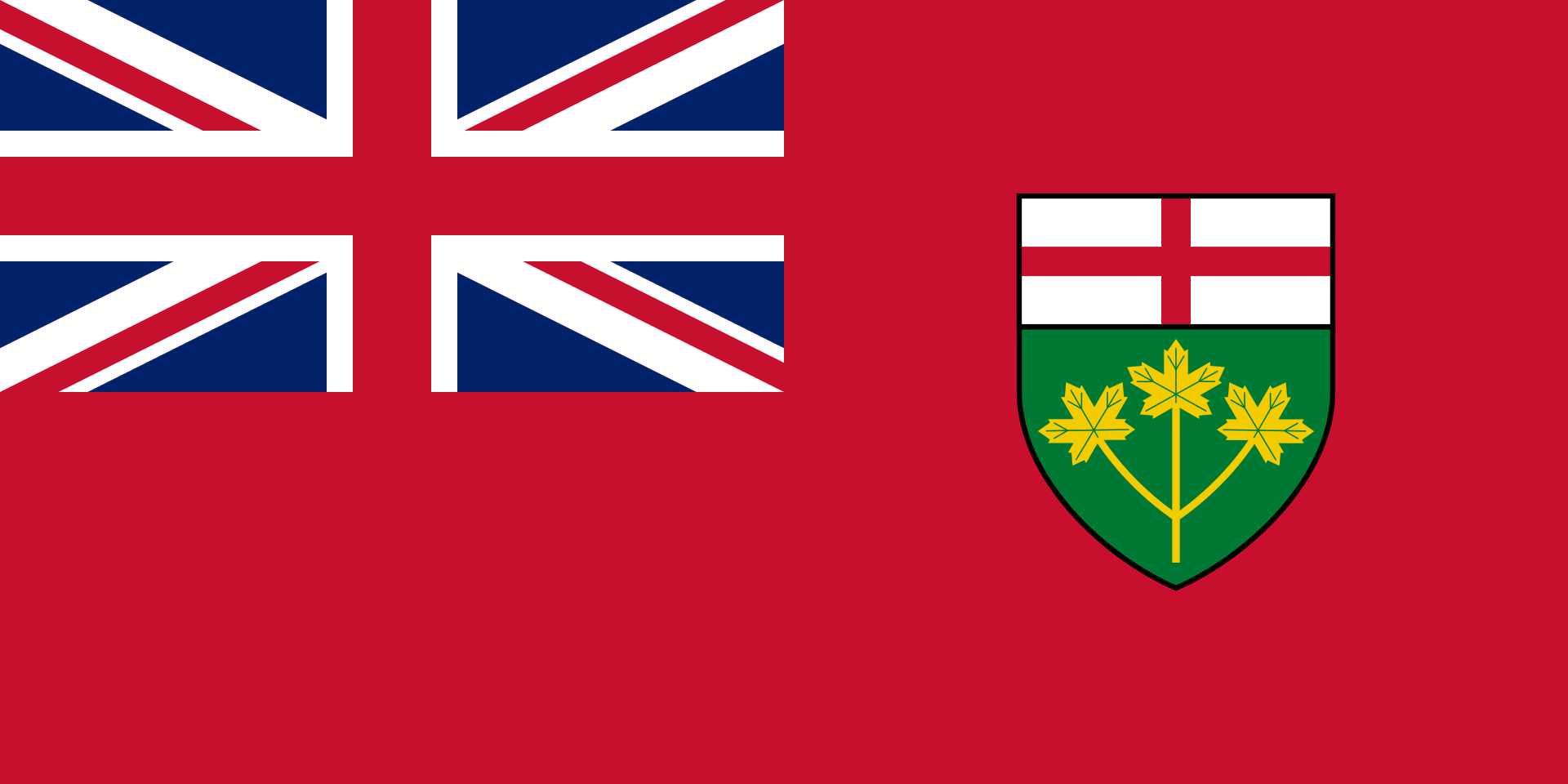 Ontario-ON
Ontario-ON
 Architecture
Architecture
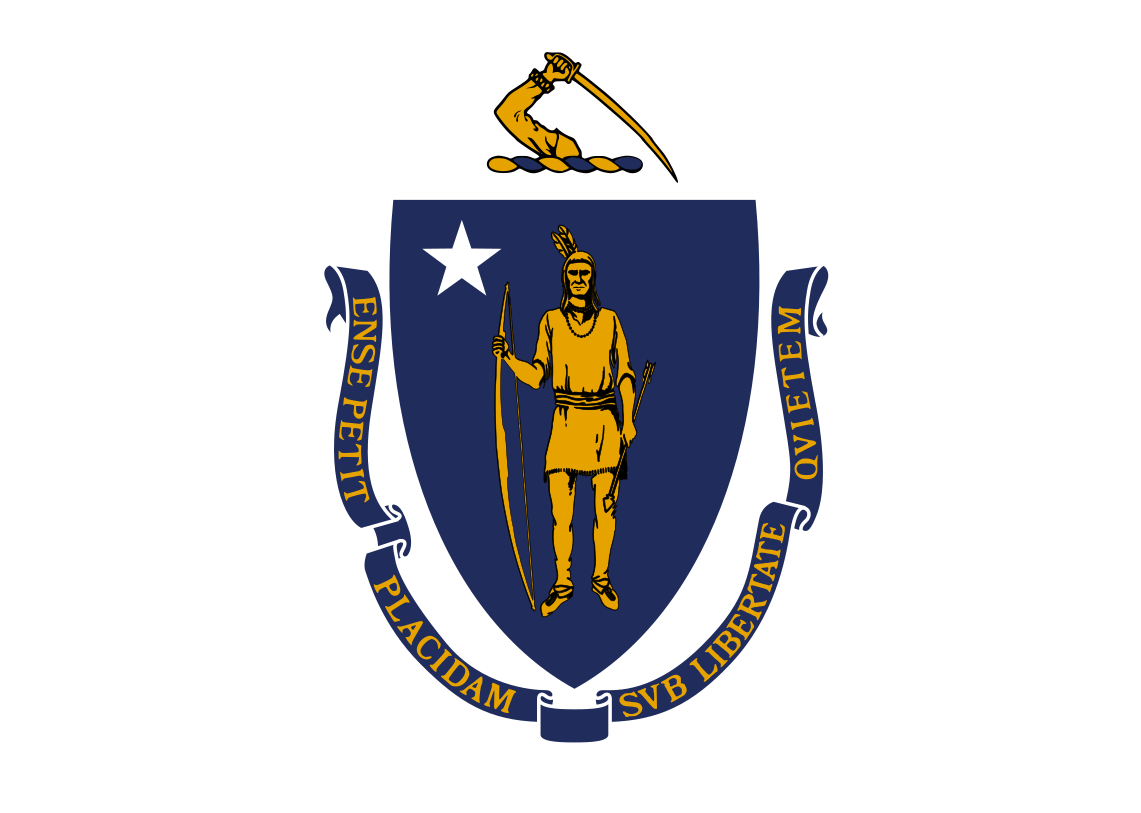 Massachusetts-MA
Massachusetts-MA
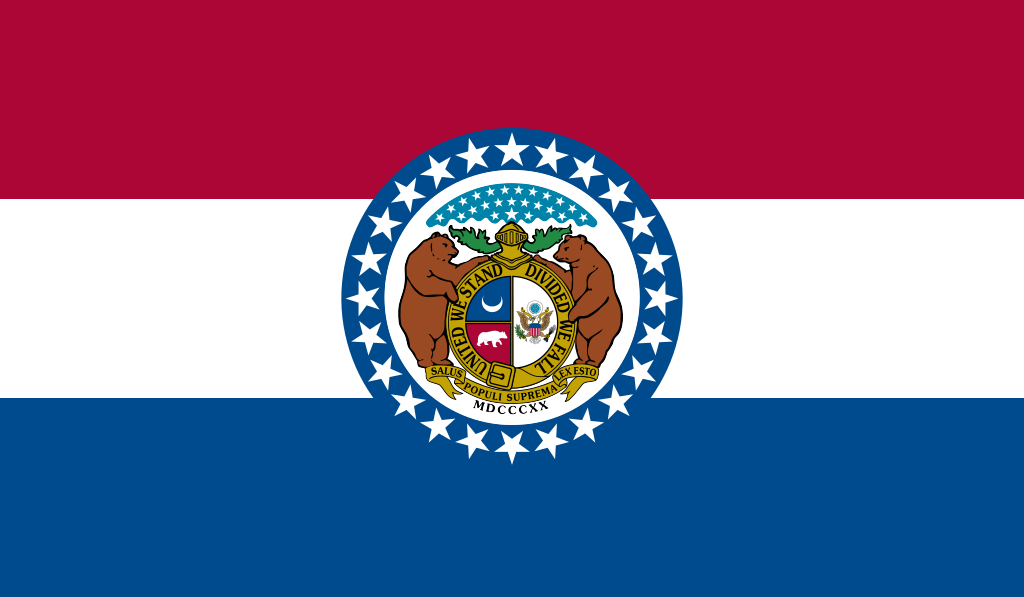 Missouri-MO
Missouri-MO
